19 Best Terms & Conditions Examples for Websites (2025)
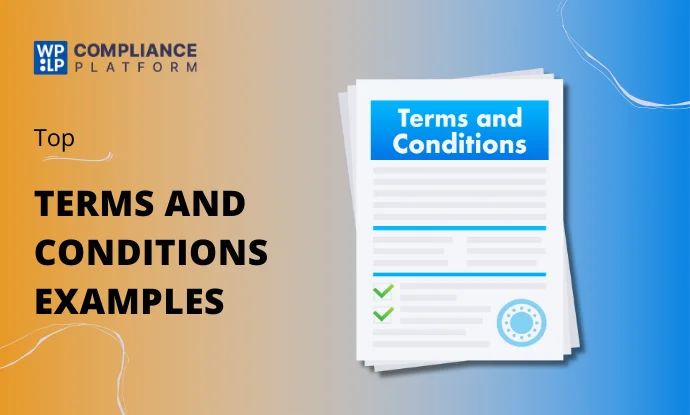
Summary
This article, Best Terms and Conditions Examples, explores real-world T&C pages from industry leaders, providing valuable insights into what makes an effective agreement.
Beyond just examples, the article breaks down key components every T&C page should include, such as user obligations, intellectual property rights, disclaimers, and limitations of liability.
Are you looking for some of the top terms and conditions examples for your website?
Terms and conditions are written documents that refer to critical legal terms between a business and its customer or end user.
Having a terms and conditions document on a website is essential because it protects the rights and interests of both parties by establishing clear guidelines.
If you are in the process of creating terms and conditions for your website, this article will guide you through the process.
In addition, we have also put together a Terms and Conditions Template from around the world that you can use as a reference while creating your website’s terms and conditions.
So, let’s dive right into the article.
- What are The Terms and Conditions?
- Why Having a Terms and Conditions Page is Essential for Both Legal Protection and User Trust.
- Top Terms and Conditions Examples
- What To Include In a Website Terms and Conditions Page
- Major 2025 Updates Relevant to Terms & Conditions
- How To Create Terms and Conditions Page for Free
- Conclusion
What are The Terms and Conditions?
The agreement for terms and conditions explains the relationship between the website user and the service provider. It acts as a guide for using the company’s products or services and can also be referred to as terms of use, terms of service, or general conditions.
Its primary objective is to make the terms of service transparent and easy to understand. When it comes to end-of-season eCommerce sales, terms and conditions often affect the discount applied to a purchase.
For example, a sale may offer a 40% discount on products, but the terms and conditions could specify certain exclusions or limitations that impact the discount. Therefore, it’s crucial to carefully review the terms and conditions before making a purchase during a sale.
Check out this compliance platform comparison page to learn about various legal page plugins that offer the best features.
Why Having a Terms and Conditions Page is Essential for Both Legal Protection and User Trust.
While you aren’t legally obligated to put a terms and conditions agreement on your website or mobile app, having one available on your app or website may help you by adding to your potential legal protections.
In the case of a disagreement, having a Terms and Conditions (T&C) page on your website is crucial for both legal protection and building user trust. Here’s why:
Legal Protection
- Defines Rules & Expectations: Terms and Conditions help clarify what users can or cannot do on your website. This reduces potential misuses, abuses, and misunderstandings.
- Limits Liability: It enables you to disclaim certain liabilities, such as content errors or downtime of the service, and protects your business from legal claims.
- Protects Intellectual Property: You can declare ownership of content as well as logos and trademarks, and minimize the risk of unauthorised use or infringement of your IP.
- Establishes Governing Law: By stating which jurisdiction’s laws apply and getting clarity on how disputes will be settled, this is even more important for international users.
- Enforces Suspension or Termination of Accounts: T&C provides you the potential to suspend or terminate a user’s account due to the breaking of the T&C It allows you to retain control over the platform.
Establishes Trustworthiness with Users
- Demonstrates Transparency: Having a well-worded Terms and Conditions page shows that your business is transparent and is being honest about how it works.
- Defines Expectations: Users like to know exactly what they are agreeing to and what they can anticipate, which builds trust with your brand.
- Encourage Considerate Use: Stating what is acceptable behaviour helps create an acceptable environment for everyone.
- Increases Professionalism: Having formalized and published policies makes it clear your website or app is legitimate and organized.
Top Terms and Conditions Examples
Here’s a list of all the best terms and conditions examples available online. All these terms and conditions templates are from renowned companies, so you can be sure that your privacy policies and compliance regulations are covered.
1. Dealfuel– Website Terms of Use Example
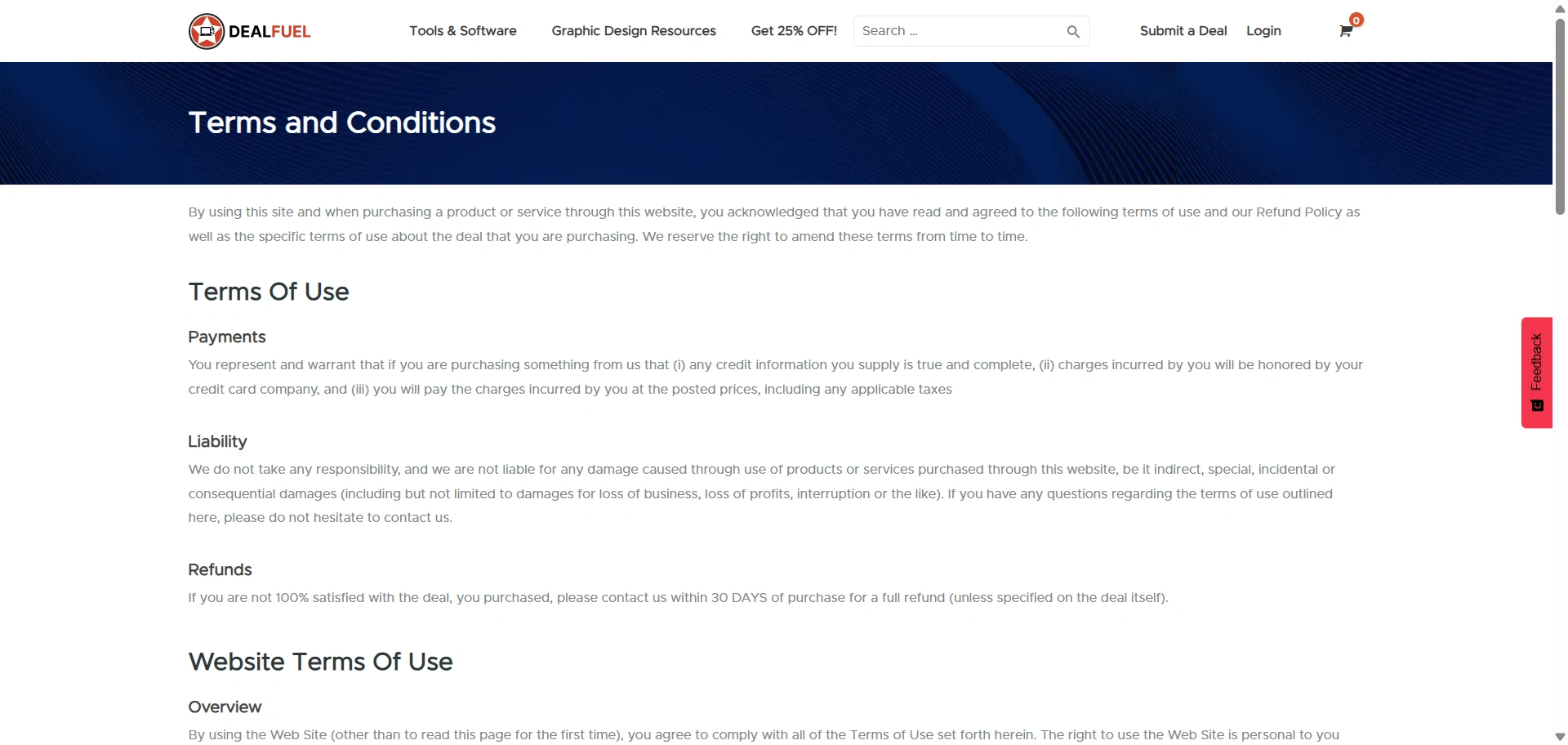
From the many terms and conditions examples, Dealfuels’ terms and conditions template is concise and refreshing. It indicates that lengthy legal documents are not necessary to convey your point.
2. Walmart – Sample Terms of Use For Website
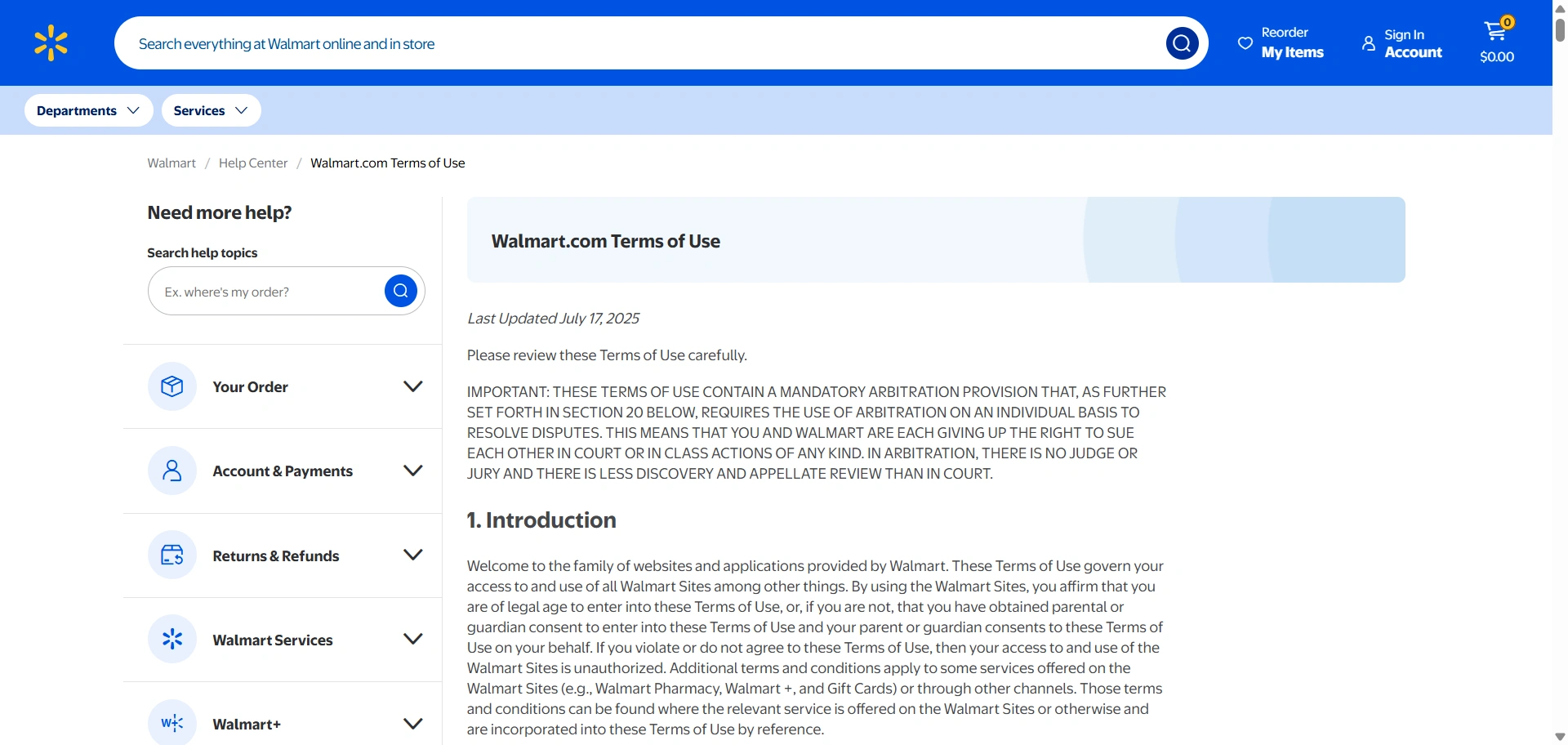
From Walmart’s terms and conditions examples, this big retail chain’s terms of service template is simple and follows the website’s design. It has lengthy, detailed terms and conditions and many applicable user clauses.
3. Zara– Terms and Conditions Examples
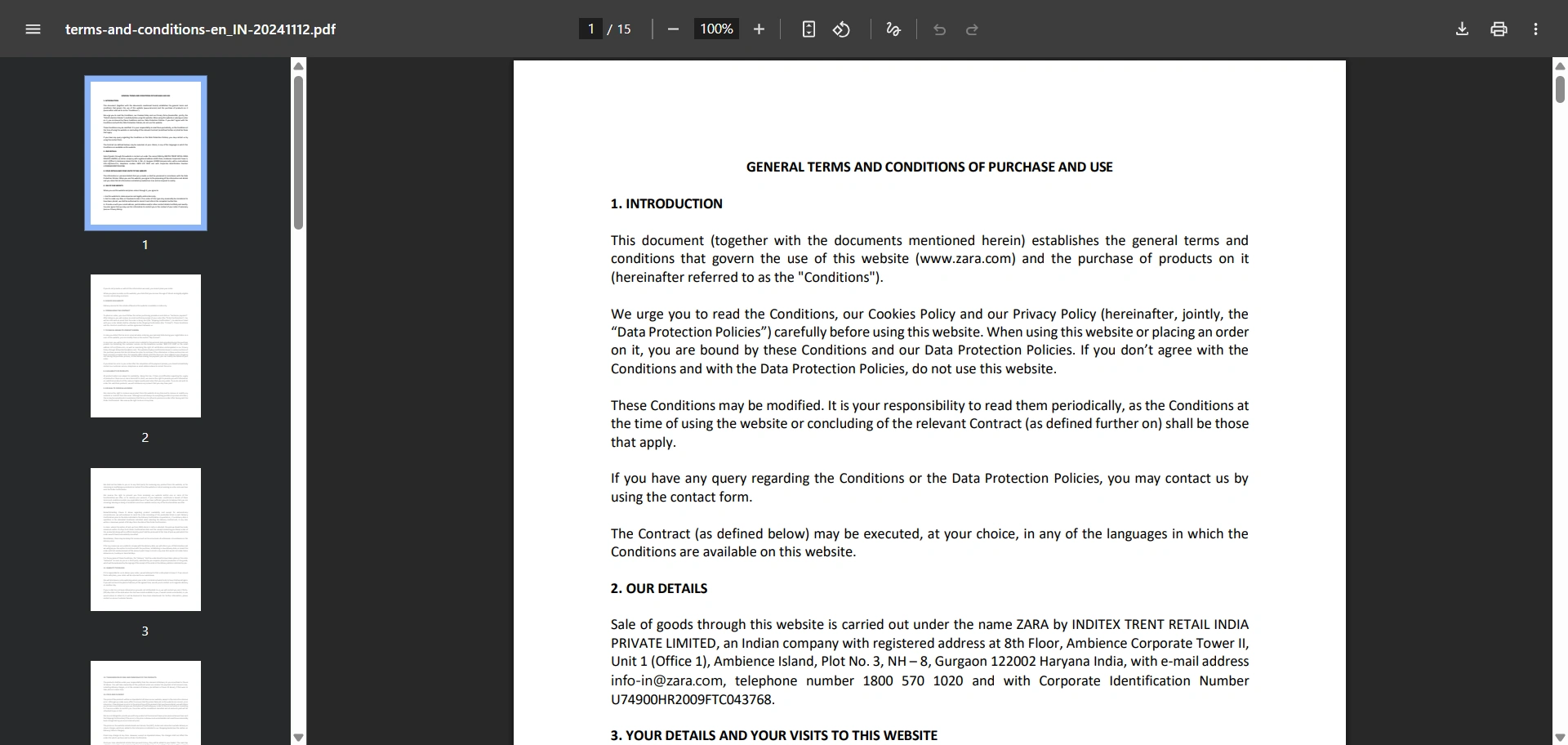
Zara, a famous clothing brand for youngsters, divides its terms and conditions into sections that address various subjects, including order refusals and dispute resolution.
However, the part of this legal agreement that describes how consumers should use the website and app or how not to is the most important.
4. Hamleys– Website Terms of Use Example
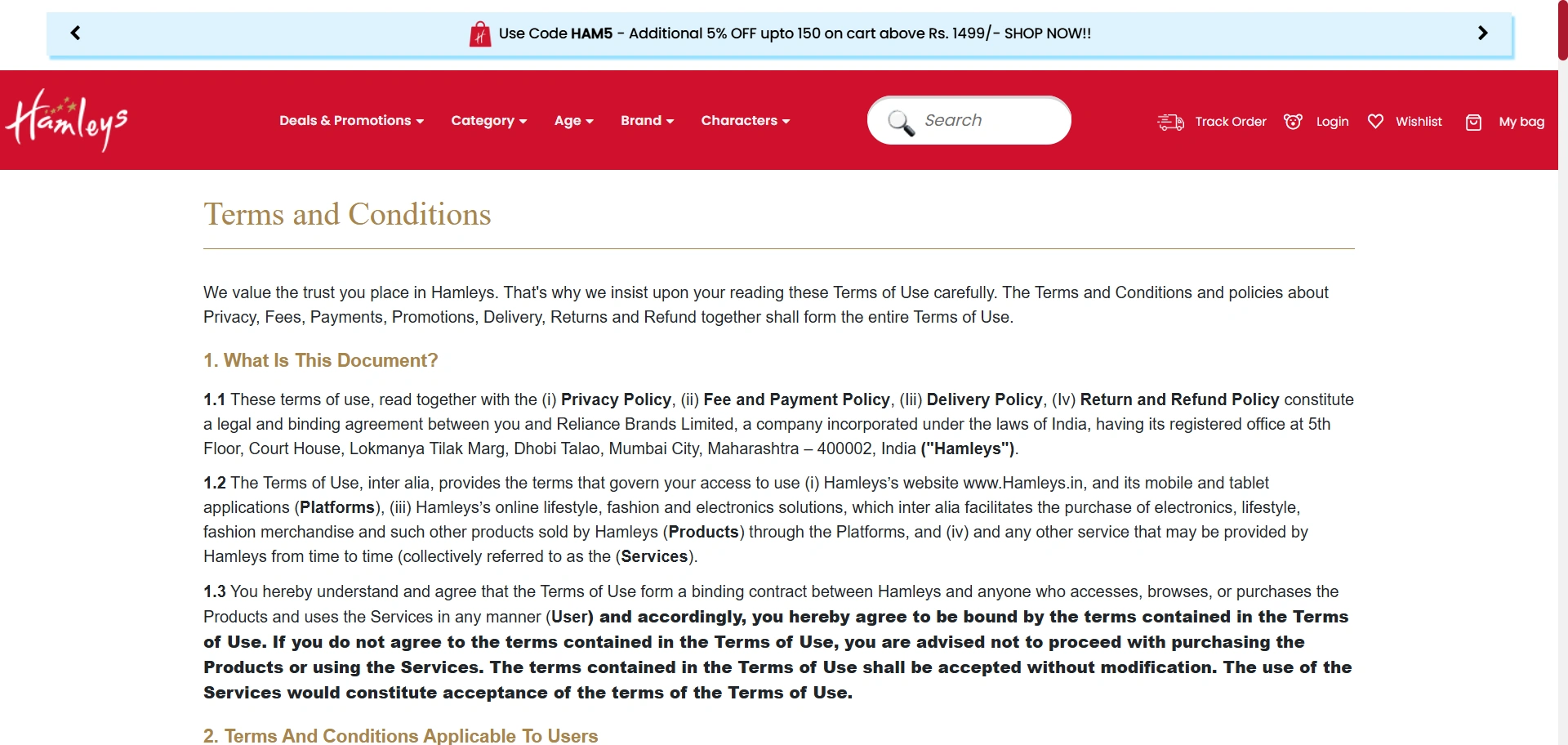
Hamley’s website terms and conditions stand out the best because they include transferring rights and obligations, circumstances outside of the company’s control, refund policies, warranty information, liability, and more.
The document describes users’ rights and how they can utilize the service, even though it contains legalese.
5. Lamborghini– Sample Terms of Use For Website
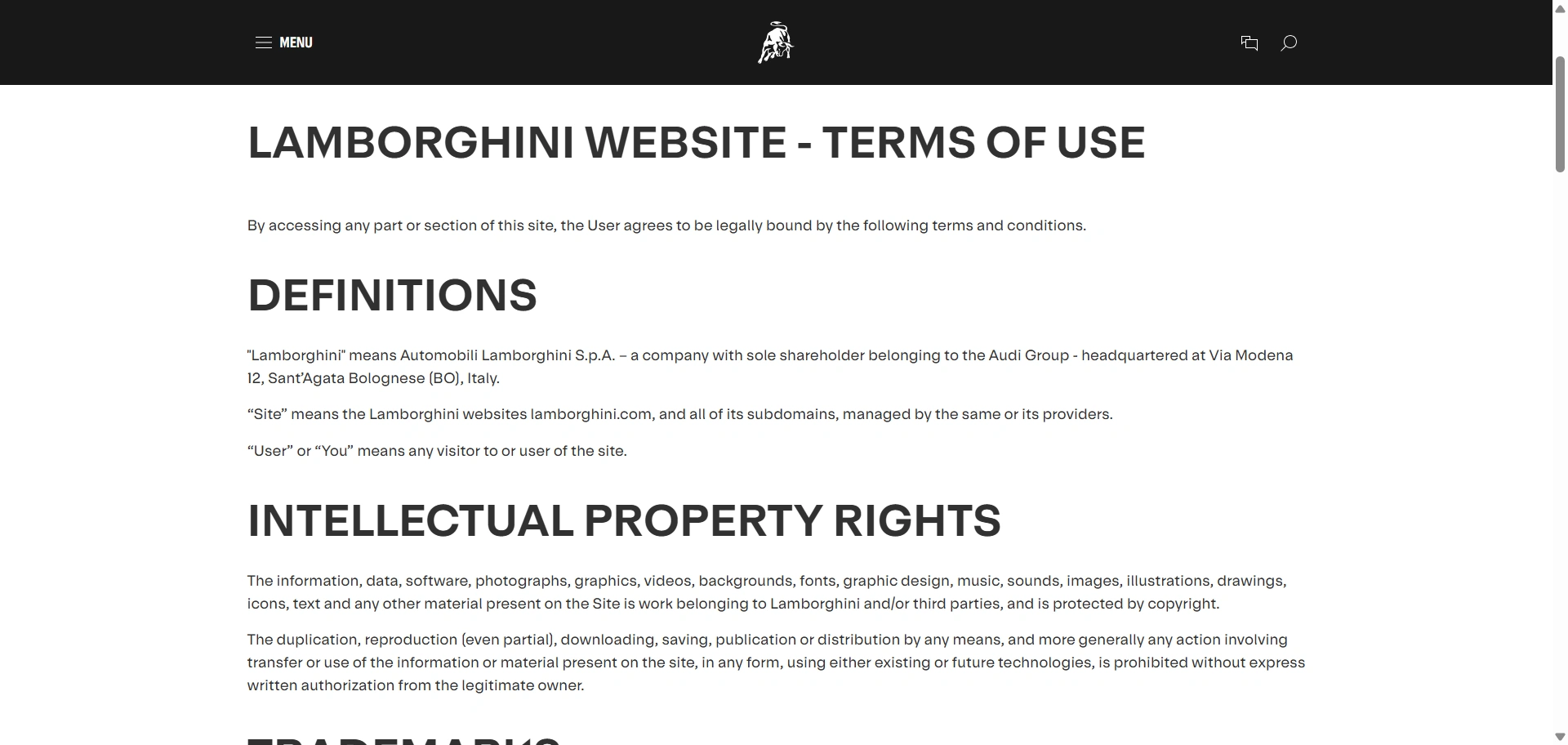
The well-known carmaker Lamborghini has detailed terms and conditions describing its trademarks, intellectual property rights, and other topics.
These terms, broken down into fourteen categories, give consumers clear and understandable information about their expectations and rights while interacting with users.
6. Hermes-Terms and Conditions Examples
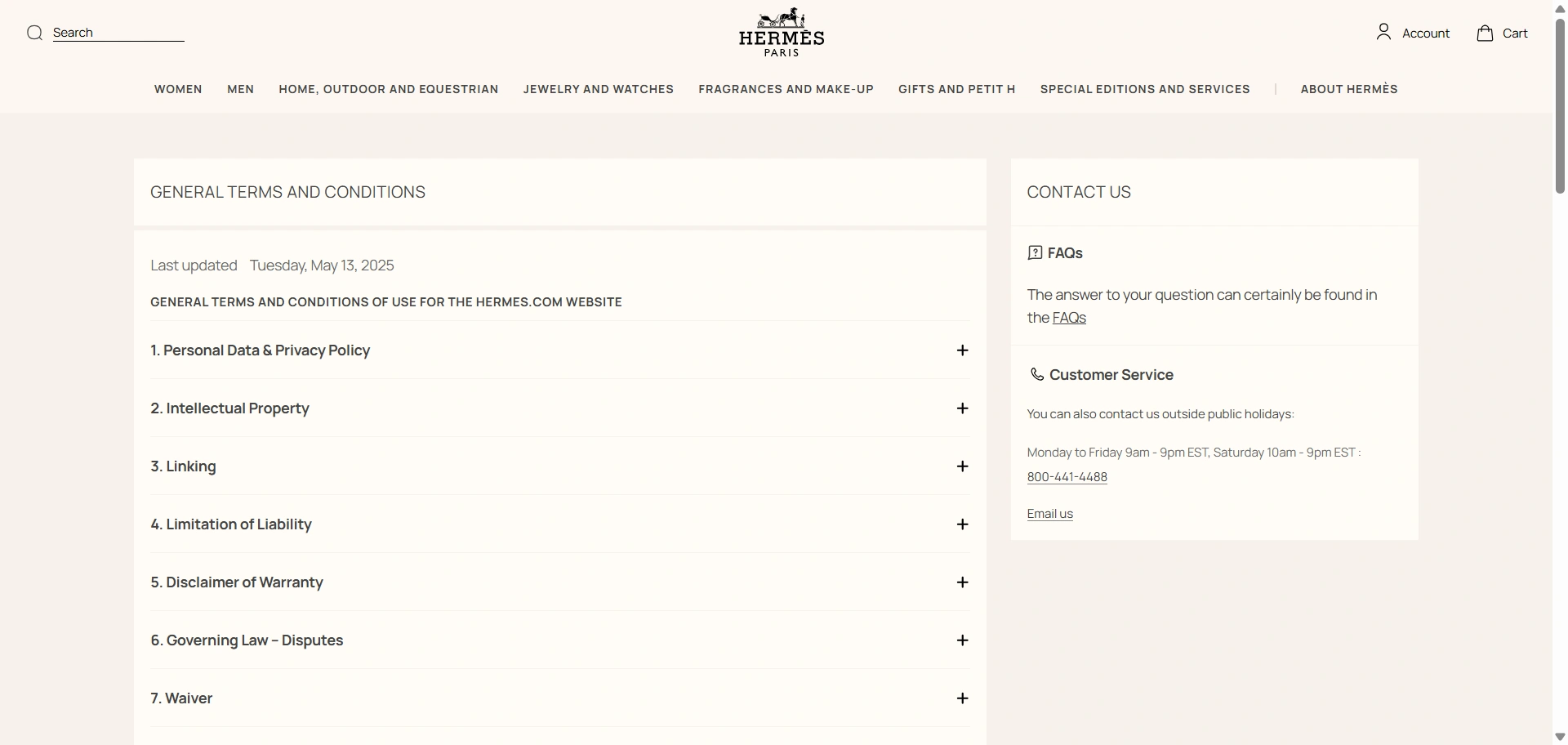
You can refer to Hermes, as it provides you with one of the best terms and conditions examples. The Terms and Conditions page includes a Table of Contents with logically organized subsections. They have written their terms of use in detail and to the point.
7. The Walt Disney Disney– Website Terms of Use Example
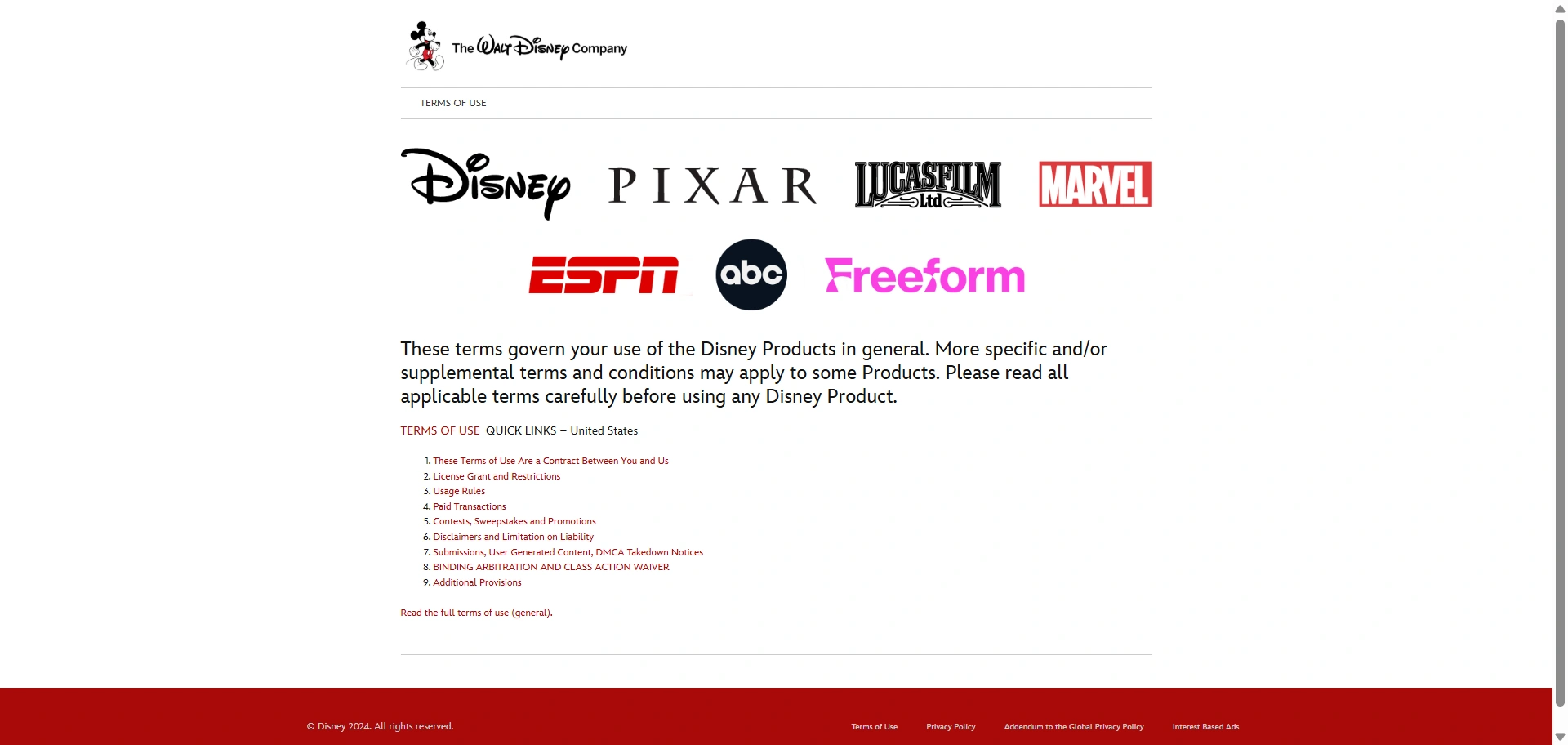
Disney’s terms and conditions template is specific and is available in 39 languages. It includes nine sections for different Disney products.
8. HubSpot – Sample Terms of Use For Website
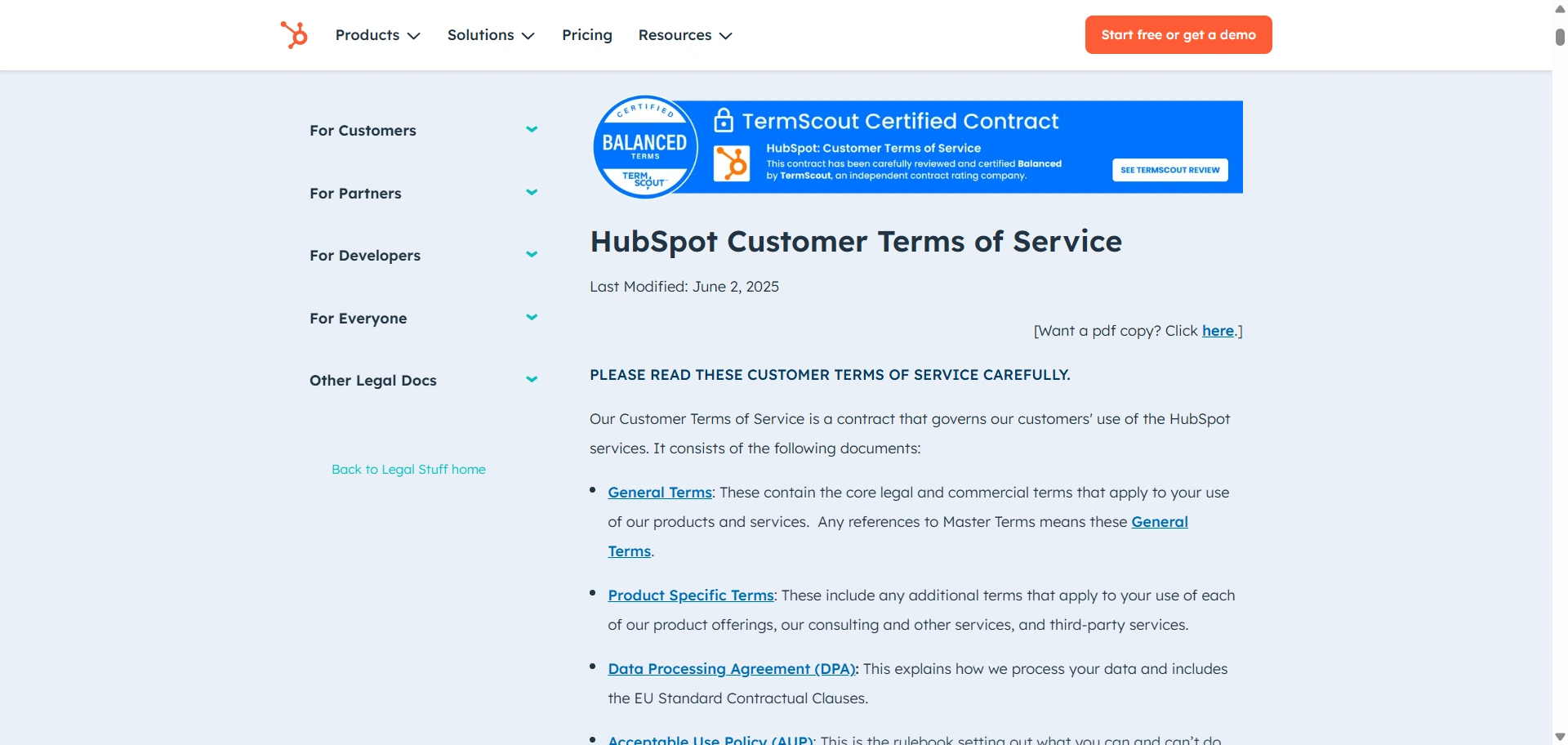
Of all the terms and conditions examples, HubSpot’s terms and conditions page is straightforward and has the same layout as the HubSpot website. However, the lengthy agreement has several helpful terms for HubSpot users.
9. Coca-Cola– Terms and Conditions Examples
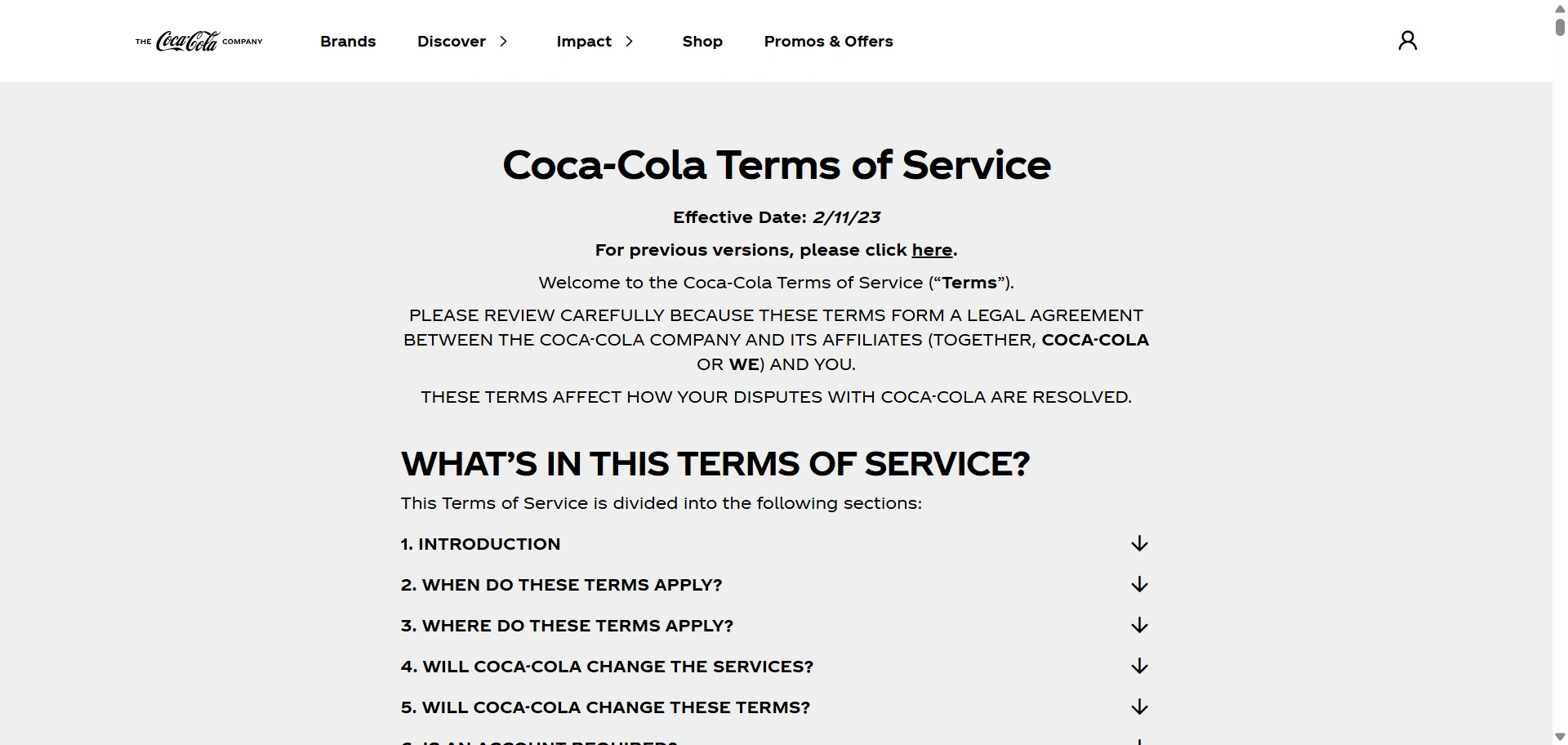
Among all the terms and conditions examples, you can refer to Coca-Cola’s terms of use template for its simple and easy way of writing. They have broken the terms and conditions into smaller blocks to help with readability and to make it more accessible.
10. IKEA– Website Terms of Use Example
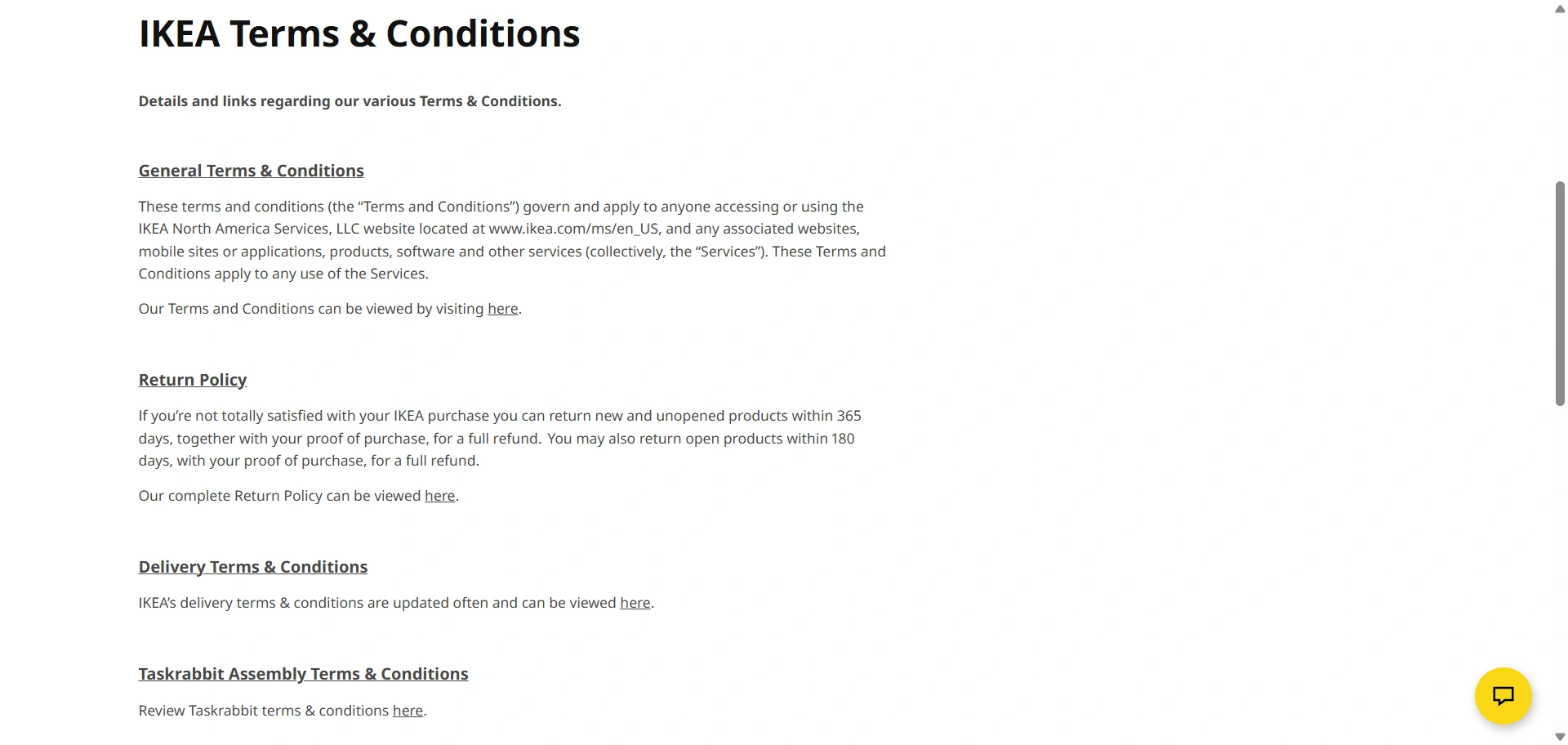
The Ikea terms and conditions page is brief. If you manage a website with a transactional setup, you can take inspiration from IKEA’s terms and conditions.
11. Amazon– Sample Terms of Use For Website
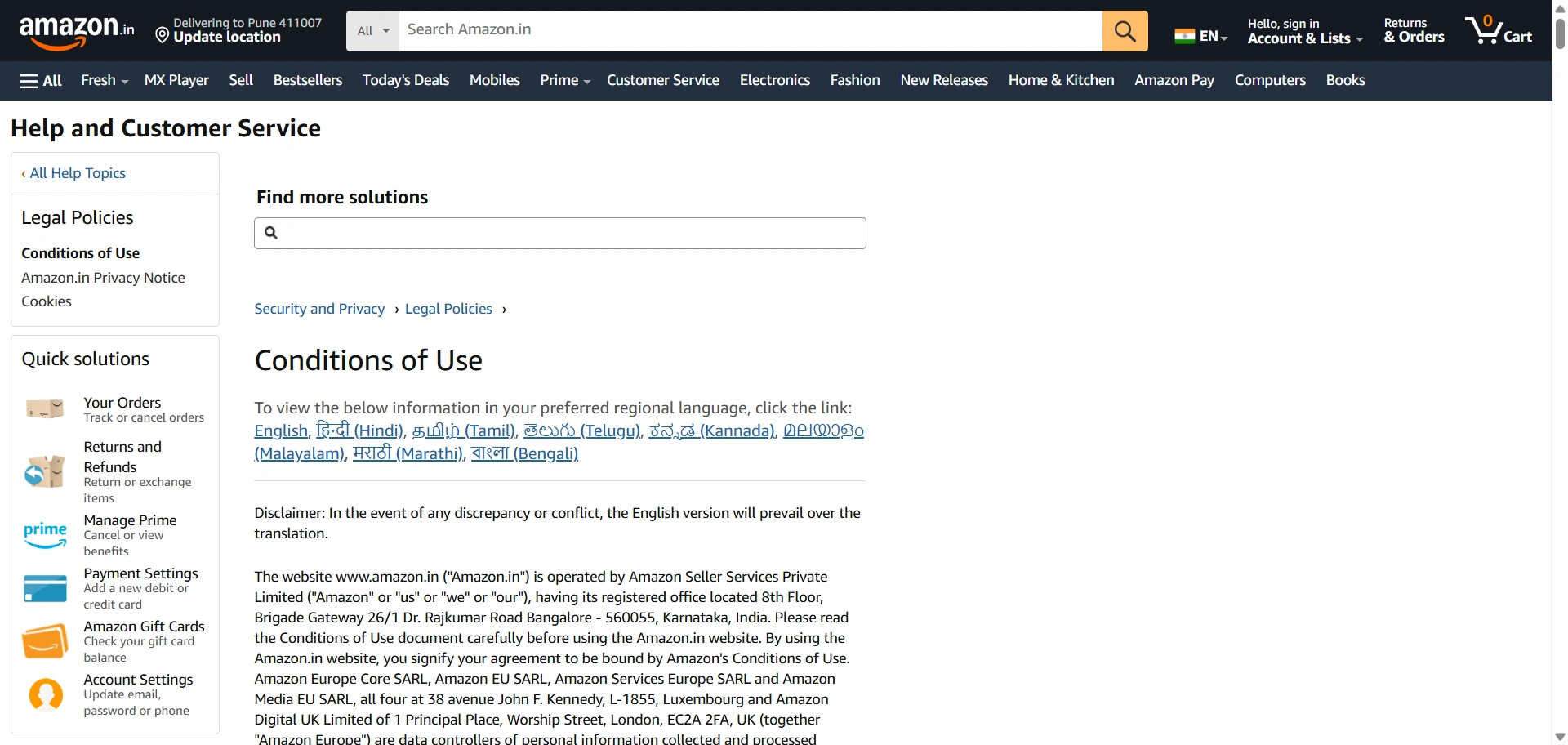
In comparison with other terms and conditions examples, Amazon’s terms of use discuss copyright, trademark, license, access, return, refunds, title, and more. If you run an e-commerce website, we recommend looking at this T&C document.
12. Facebook– Terms and Conditions Examples
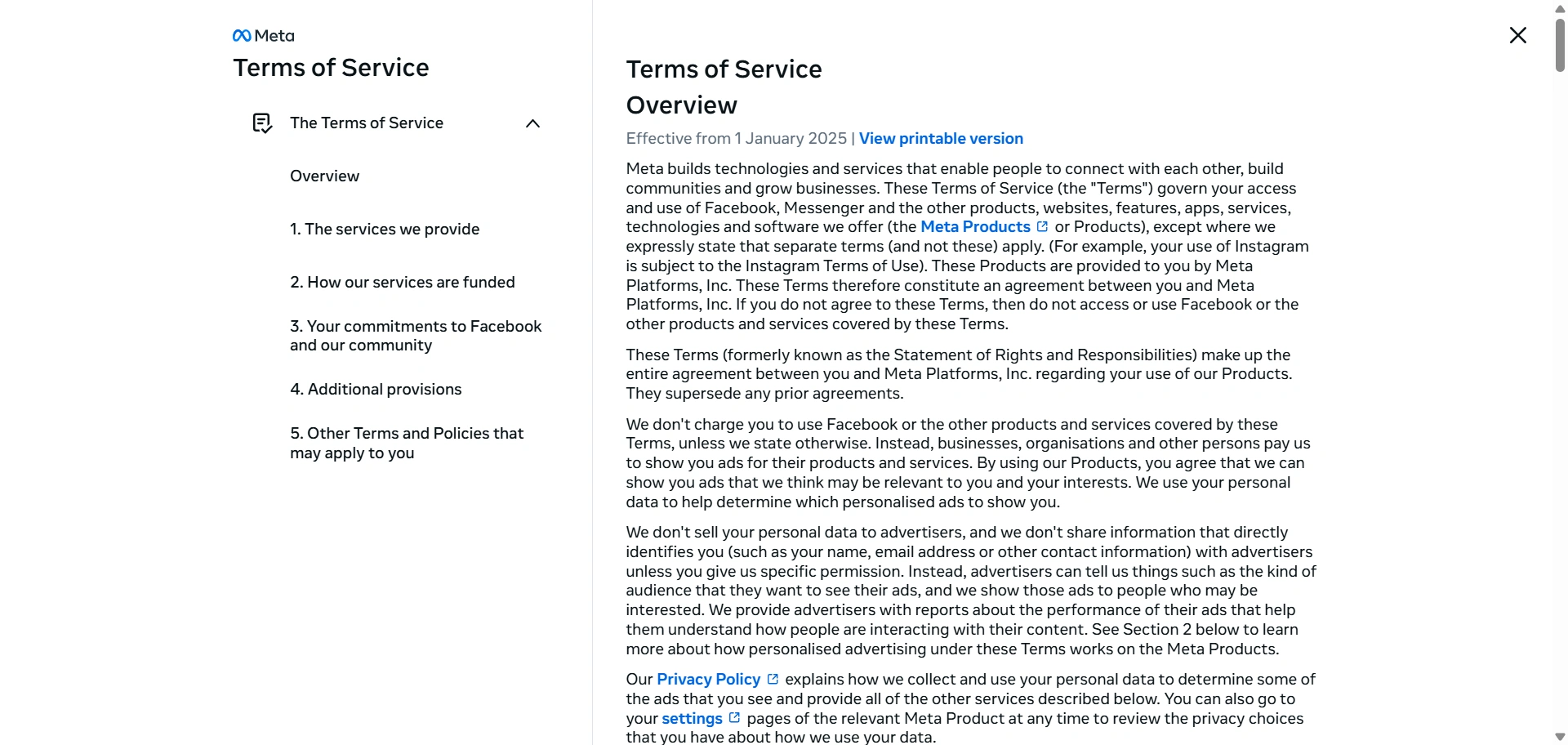
Facebook’s website’ terms and conditions are refreshing, showing that you don’t need a lengthy page of terms and conditions. It writes these terms and conditions documents to provide users with clear information about their rights and what they can expect.
13. PayPal– Website Terms of Use Example
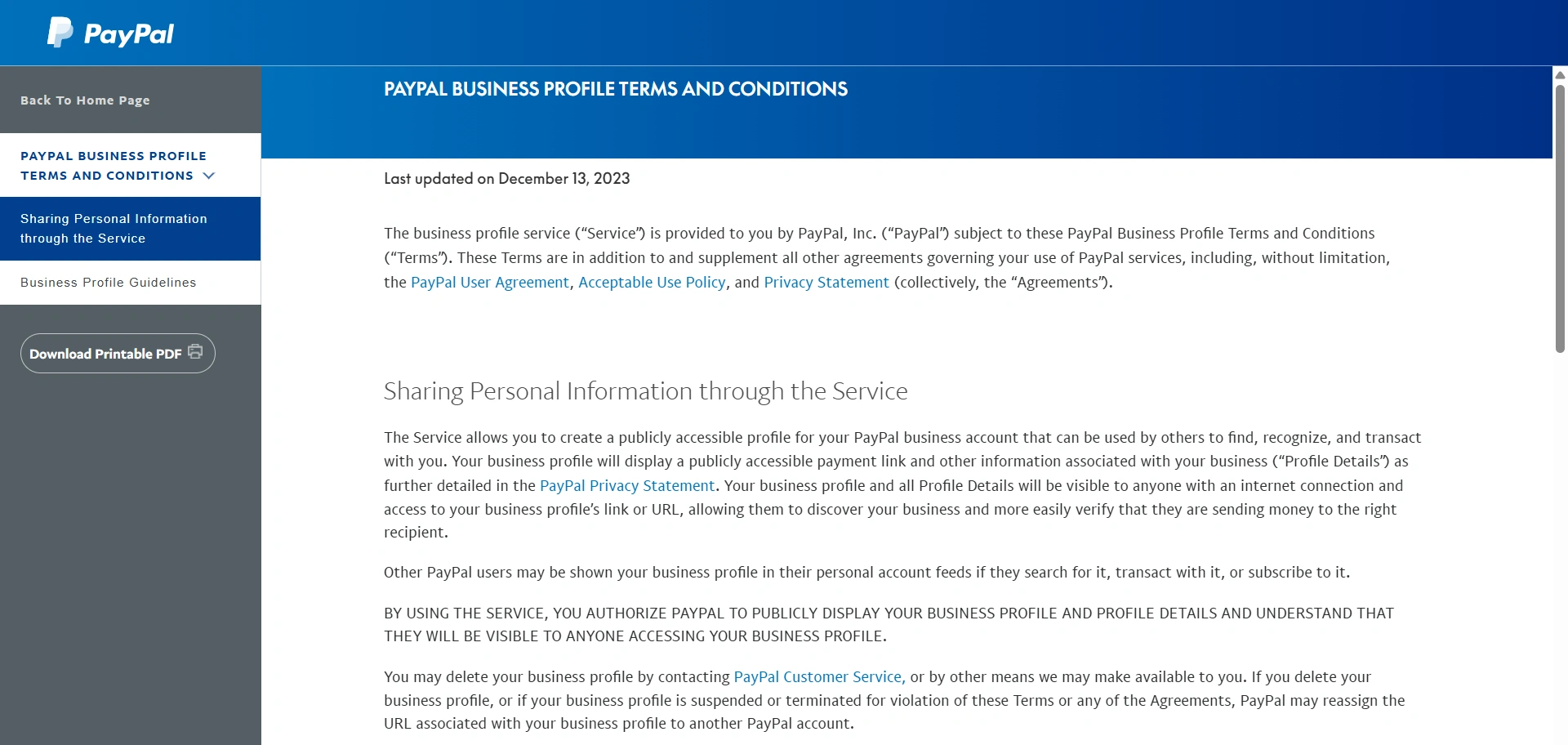
PayPal’s terms of service do not contain extensive content like the other terms and conditions examples; instead, it displays short and up-to-the-point content. The point covers a detailed description of using the service and what customers can expect from PayPal.
14. Target– Sample Terms of Use For Website
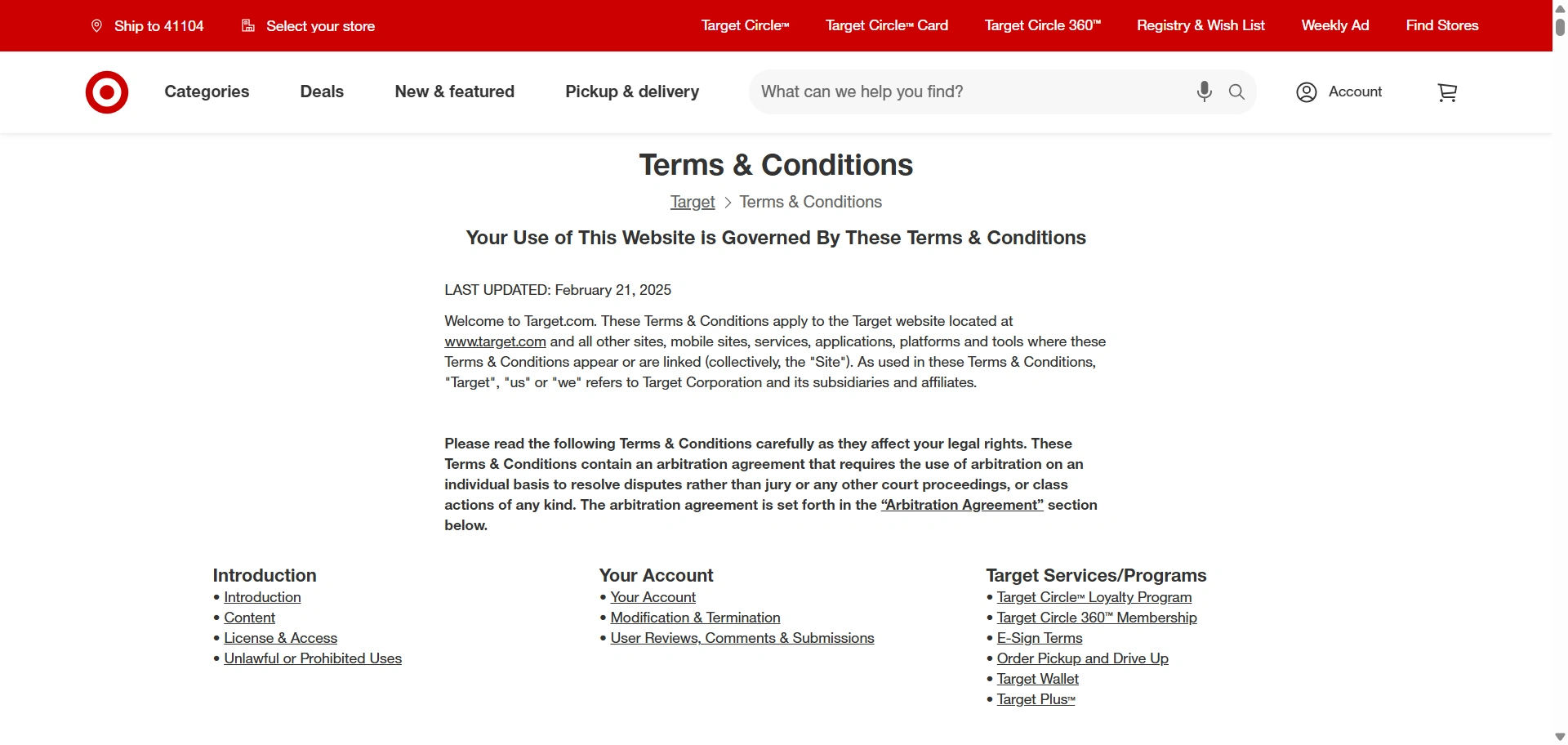
The acceptable usage policy is covered on Target’s website’s terms and conditions page. Target is a retailer in the United States. The jump links at the top of the page allow users to easily navigate to different sections.
Most importantly, the website serves its purpose of informing users about the rules and regulations they must follow on the site while also protecting Target from any legal issues.
15. Sony Music– Terms and Conditions Examples
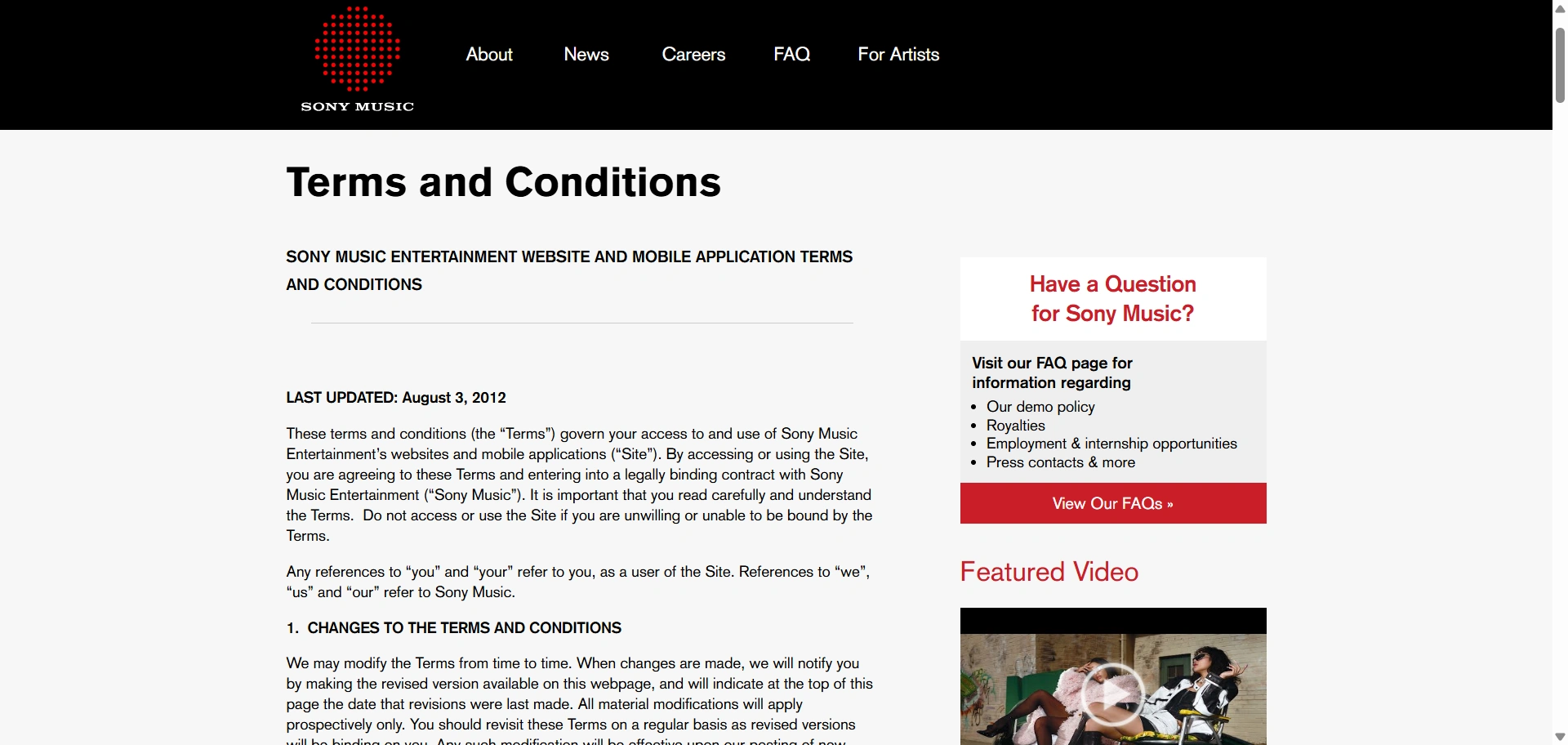
Sony’s website terms and conditions are written in a very clustered format, which isn’t as aesthetically pleasing as Spotify’s, but yes, it gets its job done.
16. Instagram – Website Terms of Use Example
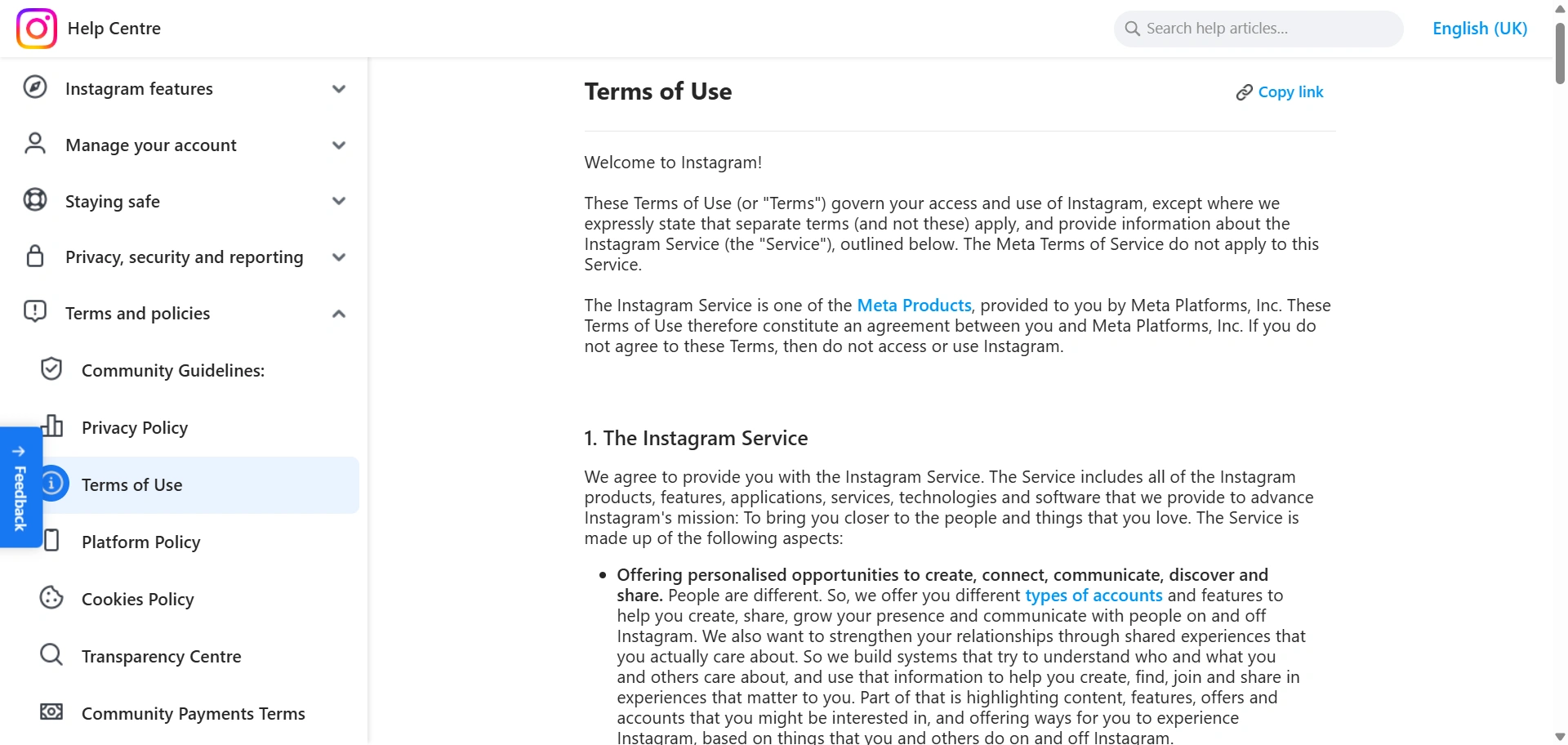
Instagram has a well-written and concise terms and conditions template. As a company worth trillions of dollars, Instagram is dedicated to offering its services to platform users. The document outlines the platform’s privacy policy and Instagram’s commitments to its users.
17. Shutterstock– Sample Terms of Use For Website
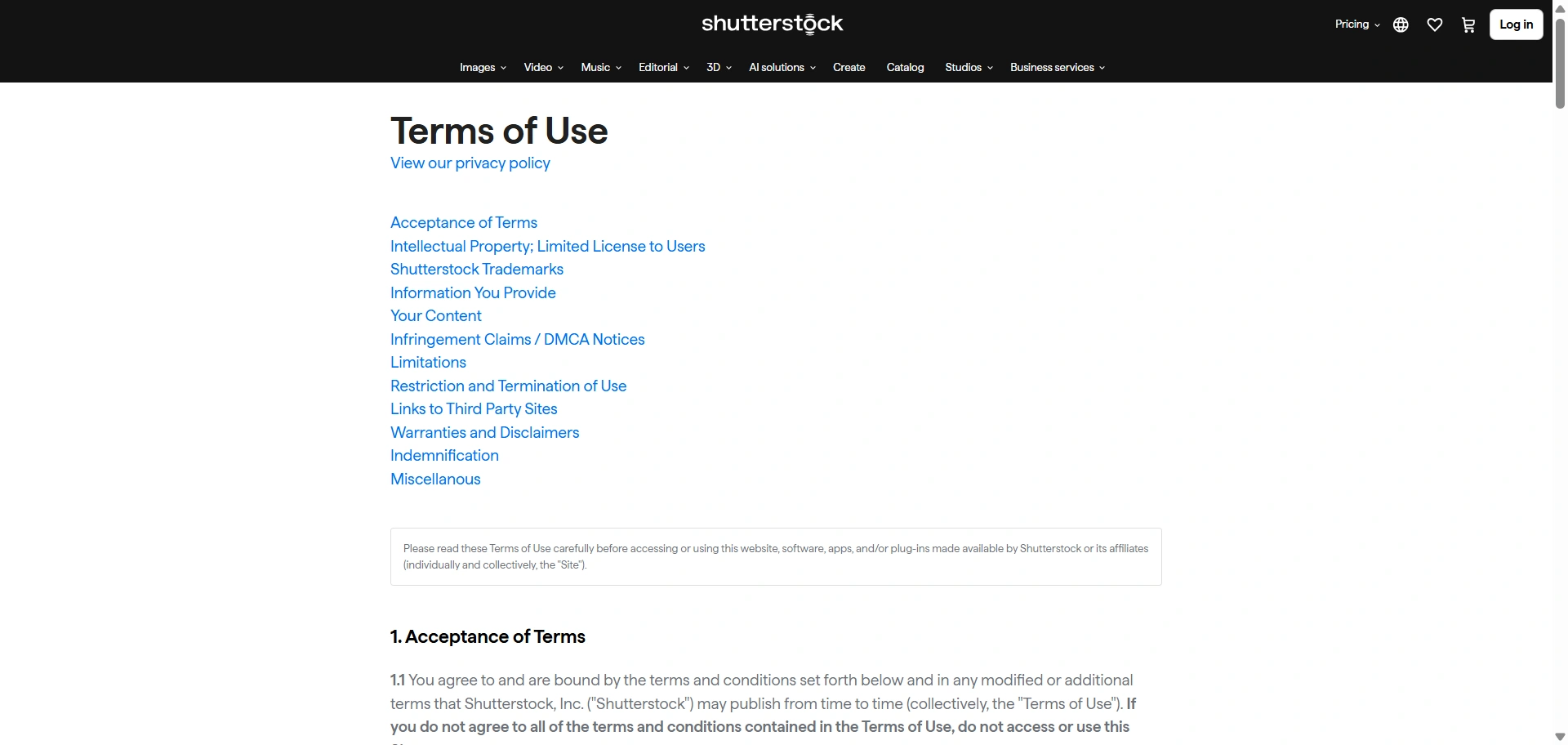
Shutterstock is an interesting website to explore as it regularly deals with intellectual Property and user-generated content. The well-organized terms of use, which are divided into twelve sections, provide users with a clear understanding of their rights and Shutterstock’s expectations of them.
18. WPLP Compliance Platform – SaaS terms and conditions example
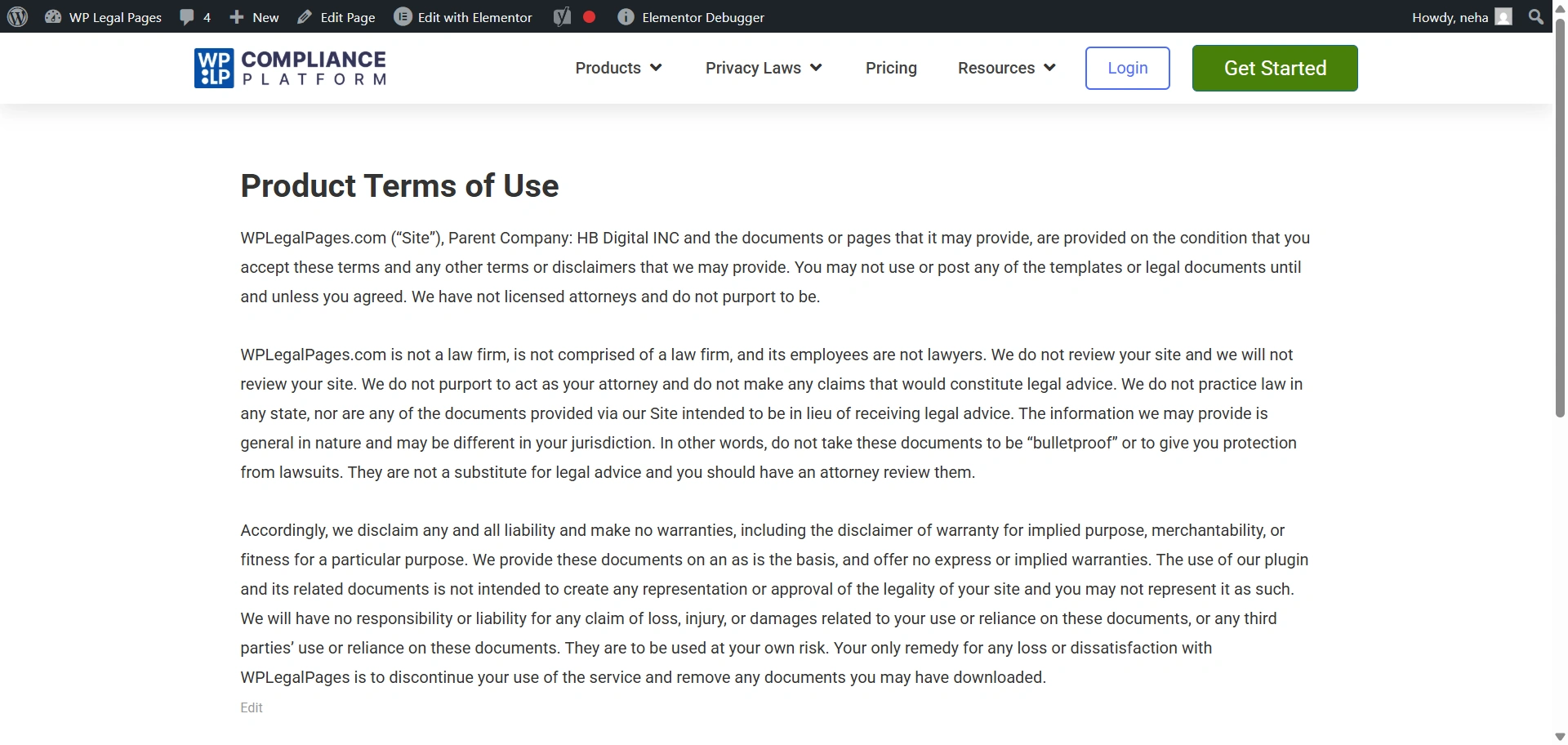
From the WPLP Compliance Platform’s Terms of Use, this example is clear, user-friendly, and tailored for WordPress site owners. It includes key clauses like content use, liability, and user responsibilities. The structure is simple yet offers strong legal protection.
19. ChatGPT– Sample of terms of use of the AI Platform
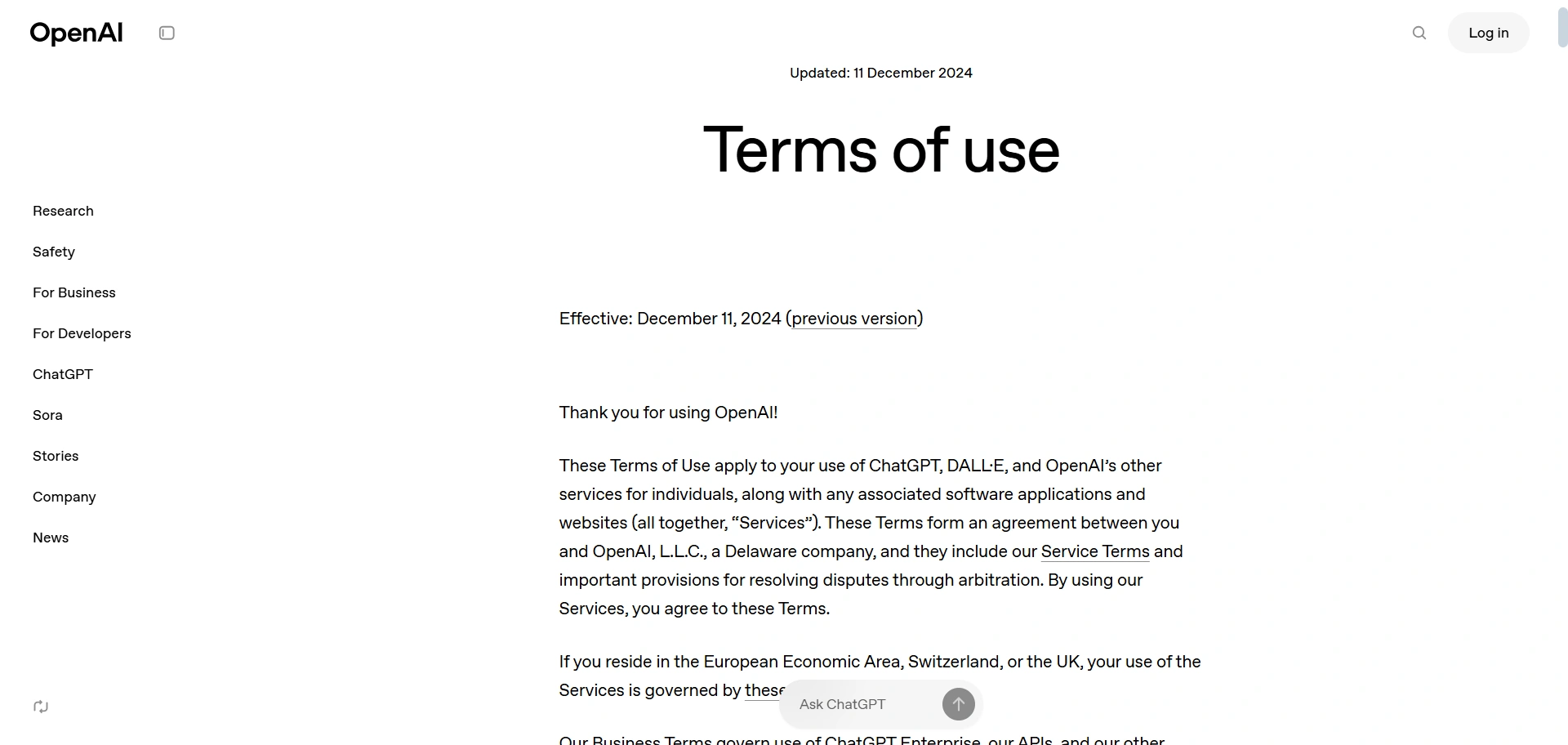
OpenAI’s Terms of Use outline the guidelines for using ChatGPT, DALL·E, and other OpenAI services. When you use those services, you agree to abide by the various terms of use that will govern how you can use the services and other OpenAI services.
On this point, terms of use will explain the acceptable use, operating an account, intellectual property rights, dispute resolution (including arbitration in some areas), and generally, with only slight differences for users in the European Economic Area, UK, and Switzerland, where regional rules are relevant.
What To Include In a Website Terms and Conditions Page
We understand the terms and conditions format from the above examples of terms of use, but are you aware of what is included in the terms and conditions documents?
In your T&C, you can provide guidelines and restrictions about how users can access and use your mobile app and website.
The following list of clauses should be kept in mind while creating a terms and conditions agreement for your online store:
Introduction Clause
An introductory clause for your terms and conditions should let users know what is being covered, who you are and to whom they apply.
Within this clause, it should be noted that anyone using your service must comply with the terms and that continued use of your platform amounts to acceptance of the terms. This is known as implied acceptance and is standard practice in most website terms and conditions documents.

Intellectual Property
Intellectual property (IP), in terms of use, typically refers to the legal terms that protect a company’s creations and define how users can use them. Usually, the terms say that the IP in question, such as software, content, trademarks, etc, is owned by the company, and that users may use it only under a very limited, non-dark commercial license.
The terms will generally provide some restrictions and maybe obligations with respect to user-generated content, as they often want a very broad license to the IP from all users and generally agree that they will retain ownership of any user-generated intellectual property.
IP terms of use are particularly important when you need to restrict a user to prevent them from misusing, abusing, or diluting the company’s IP, and to legally protect and define the company’s assets. Simply put, IP terms of use provide a legal basis to enforce any infringement of a company’s IP rights.

Governing Law
Users shall be informed of which laws apply to the agreement using a Governing Law clause. The nation where your business is based, or the nation from which you run your website and mobile application, should be the source of these regulations.
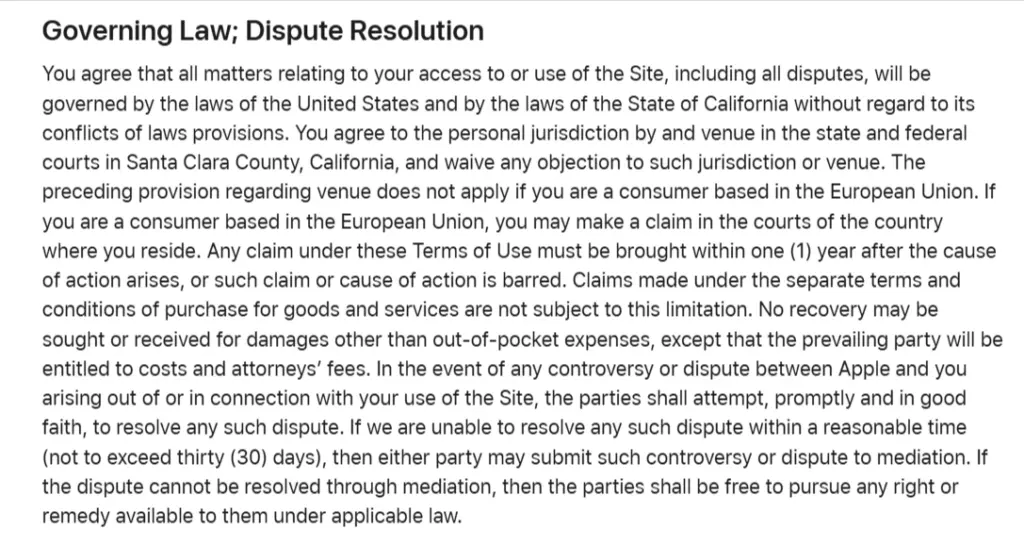
Effective Date
You should add an effective date close to the beginning of the agreement so that users will know when it was last updated.
Just keep it nice and simple. Each time you amend your agreement, change the effective date.
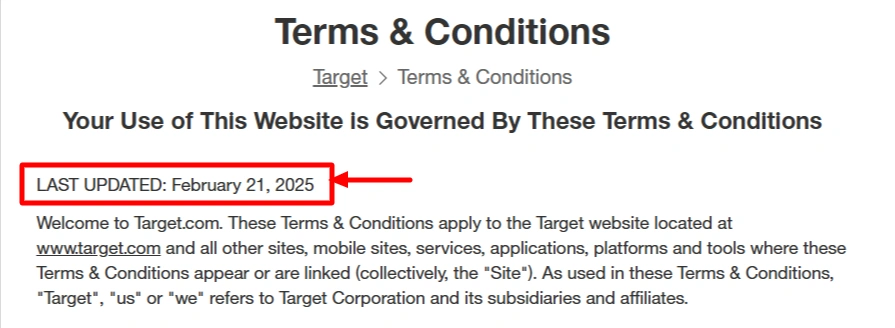
Content Clause
If your website or mobile app allows users to upload and share content with others, it is essential to include a content clause. This clause informs users that they have the right to the content they have created.
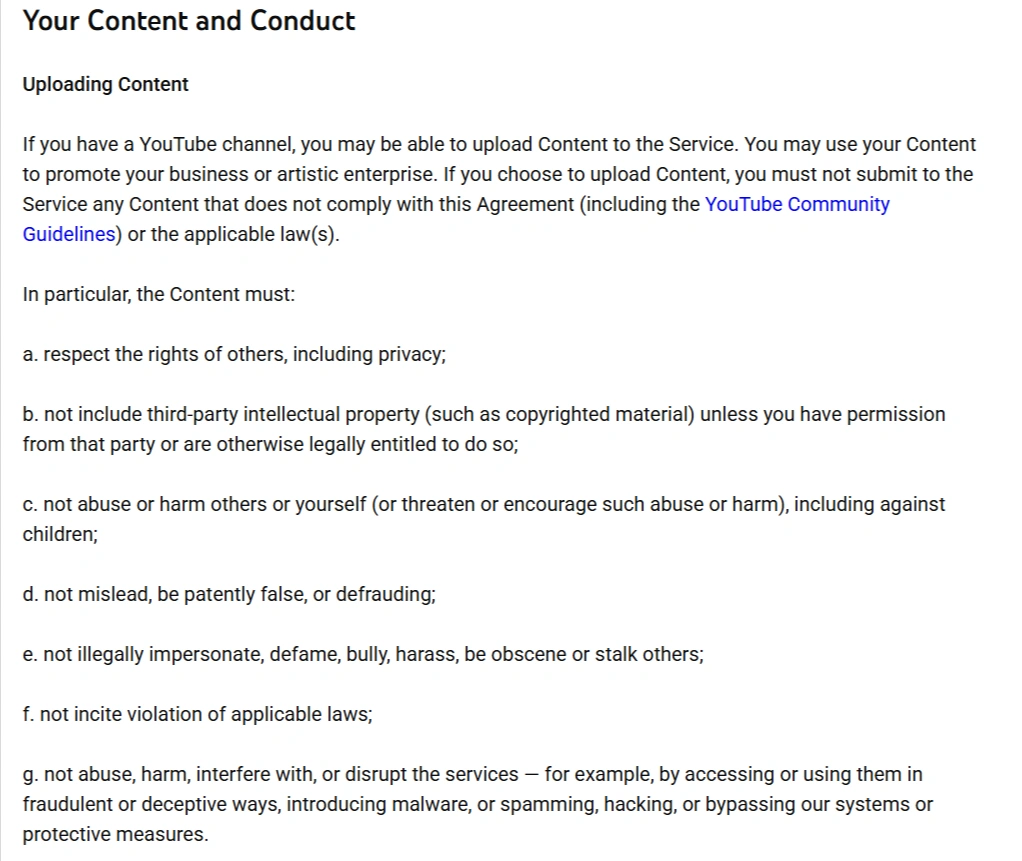
Third Parties Clause
If your website has links to external sources, you should put in a third-party clause in your terms and conditions agreement indicating that you are not responsible for the content of sites you link to.

Prohibited Activities And Restrictions Clause
You should also add a section to your Terms and Conditions that lays out things that users cannot do and seeks to prohibit abuse of your site.
Usually, this will prohibit a user from:
- Revealing another user’s personal information (e.g., usernames, passwords)
- Advocating violence
- Posting materials that are discriminatory, abusive, threatening, pornographic, or otherwise offensive
- Engaging in illegal acts
- Sending junk mail, spam, or chain letters
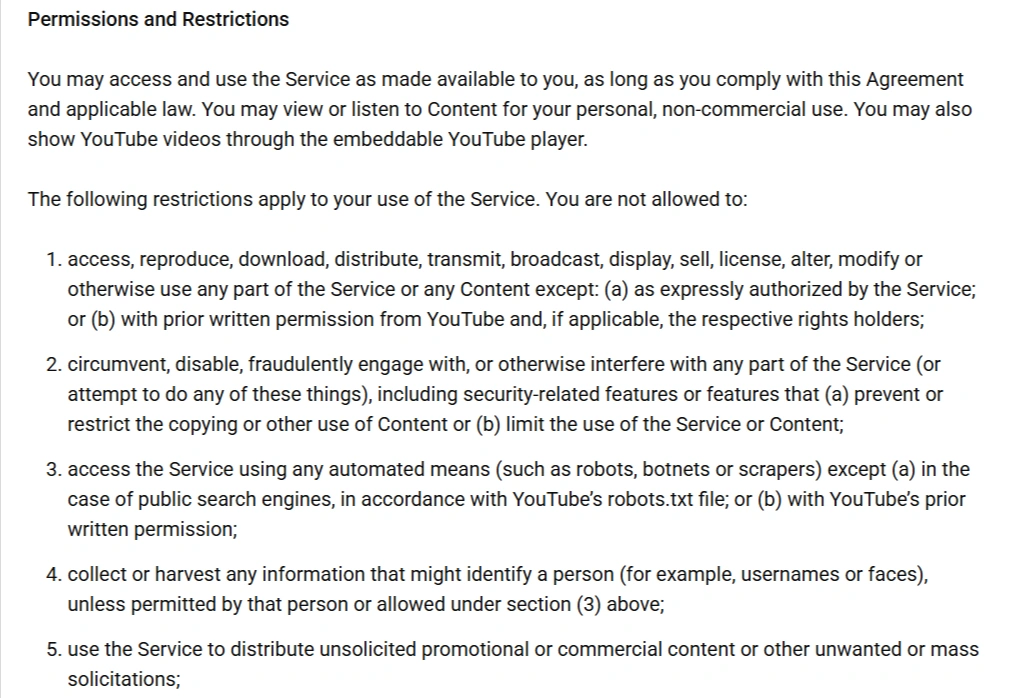
Suspension and Termination Clause
Having a Suspension and Termination clause in your Terms and Conditions will help protect your site or app from abusive or non-compliant users. A Suspension and Termination clause should lay out your right to suspend or terminate user accounts that violate your terms, as well as to remove associated content.
It is also helpful to detail how users can delete their own account or terminate a subscription, particularly in a Software-as-a-Service (SaaS) environment.
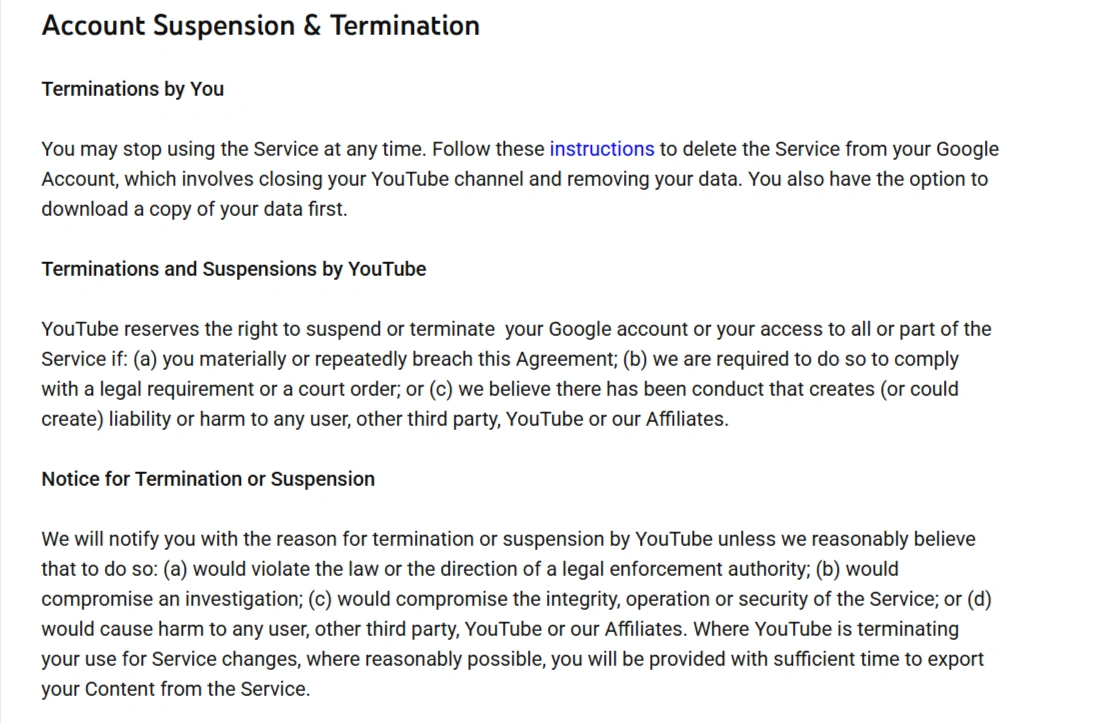
Pricing and Payment Terms Clause
A Pricing and Payment Terms provision in your Terms and Conditions helps set expectations on how customers will be charged and what payment methods will be accepted.
This provision should describe how you price your services or products, how often you bill clients, what payment methods you will accept, and any other material transaction terms.
When drafting your Pricing and Payment Terms, be as specific as possible to avoid misunderstandings. At the same time, use flexible terms such as “as available” for services and “as provided” for products. This wording helps protect your business from unreasonable claims, such as a customer arguing that you failed to state an item was discontinued.
Being clear about your payment terms also promotes transparency and is one more way to protect your business if there’s ever a dispute.

Returns And Refund Policy Clause
A Returns and Refund Policy provision sets out the terms on which customers may request a return or refund. This provision should make it clear the eligibility requirements.
It should also state the timescale for when to ask for a return or refund. It must explain how refunds are processed. Finally, it should specify any products or services that are not eligible for return or refund.
By articulating the expectations surrounding returns and refunds, you protect your business from disputes. Ensuring customers have a clear understanding of their rights.
Having this clause in your Terms and Conditions also builds trust and transparency, which is especially helpful for eCommerce and service-oriented businesses.
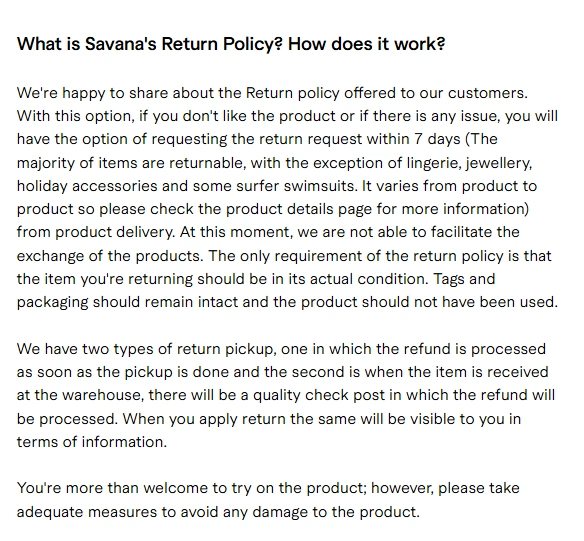
Major 2025 Updates Relevant to Terms & Conditions
1. Anti-Misleading & Transparent Pricing (UK DMCC Act – April 2025)
The UK’s Digital Markets, Competition and Consumers Act (DMCC) became law in April 2025, introducing new enforcement powers and transparency obligations. Now,
- “Drip pricing” is now plainly illegal. All compulsory charges (shipping costs, fees) must be shown to the consumer in full.
- Fake or misleading reviews are not allowed – your terms and conditions must include an undertaking that the reviews are real, and it must disclose how you moderate reviews.
- Subscription and auto-renew transparency must be fair (clear, cancellation options), as a term that is enforceable. There are draconian auto-renewal methods which could be classed as an unfair term.
2. Prohibited Terms in Consumer Financial Contracts (US Regulation AA – 2025)
Regulatory AA speaks to unfair provisions in consumer finance contracts, specifically in the case of one-sided or hidden provisions in click-through contracts.
Provisions that are buried in fine print or are not otherwise conspicuous (e.g., requiring a number of clicks to access the provision) may be challenged as being unfair.
3. New “Acceptable Use” and Child Safety Clauses for Apps (iubenda)
As of March 2025: The terms need to have explicit clauses related to exploiting or abusing children, particularly in the case of a dating, social or app of some sort, in adherence to app store guidelines (i.e. Google Play).
4. Online Dispute Resolution Clause Update (EU)
As of March 2025, it will be clearer than ever that the EU platform for consumer dispute resolution will cease to accept new complaints after March 20. The platform will only be available for complaints made before March 20 and will be closed entirely by July 2025.
5. Data Transparency & Sharing Rights (EU Data Act – Starting September 2025)
Users are given rights to access and share their own IoT data via the new EU Data Act, which also mandates fair and non-discriminatory terms for data access and portability. The terms must include:
- User rights to access, share and migrate data
- Protection against unfavourable terms for SMEs
- Interoperability of data access penalties of up to €20 million or 4% of global turnover are available.
6. India’s Digital Personal Data Protection Act (DPDPA)
DPDPA establishes significant new obligations including:
- Explicit consent for specific reasons (not blanket consent).
- Enhanced protections for minors.
- Parental consent for collecting data from anyone under 18.
- Fiduciary obligations relating to data like DPIAs and appointing a Data Protection Officer if applicable.
- Also, penalties for violation may be as much as ₹500 crore (~$60M).
How To Create Terms and Conditions Page for Free
Now that you know the best terms and conditions examples and what should be included, let’s see how to create one for your website.
Are you considering hiring a lawyer to create a T&C for your website? If so, it can be time-consuming and expensive. That is where a tool like WPLP Compliance Platform comes in. It is a free privacy policy generator that helps you create legal pages for your website.
It helps create essential legal documents such as terms and conditions, privacy policies, affiliate disclosures, and more. This platform offers a comprehensive solution to ensure legal compliance.
Its user-friendly interface allows even those without legal experience to create legal documents that can be customized to their website or business requirements. The platform offers around 30+ legal policy templates.
The platform has two versions: free and paid. The free version has four ready-to-use legal policy templates: the Standard Privacy Policy, Terms of Use, DMCA, and CCPA Policy. The premium version offers approximately thirty policy templates.
The following section will examine the WPLP Compliance Platform’s main features in more detail.
Key Features of WPLP Compliance Platform
- Announcement Banner for Privacy Policies: This banner appears whenever your legal pages are updated or changed.
- Age Verification Popup: This popup ensures that visitors to your website are of legal age to view the content.
- The Cookie Consent Bar informs visitors about the cookies you use and the information you collect.
- Quick Setup Wizard: The guided wizard user interface simplifies the process by assisting you as you add the necessary elements to your policy pages.
WPLP Compliance Platform makes creating and managing legal documents on your WordPress website easier.
Creating a Free Terms and Conditions Page Using WP Legal Pages
To install the plugin, follow these simple steps:
Head over to your WordPress dashboard. Hover over Plugins and click on the Add New menu.
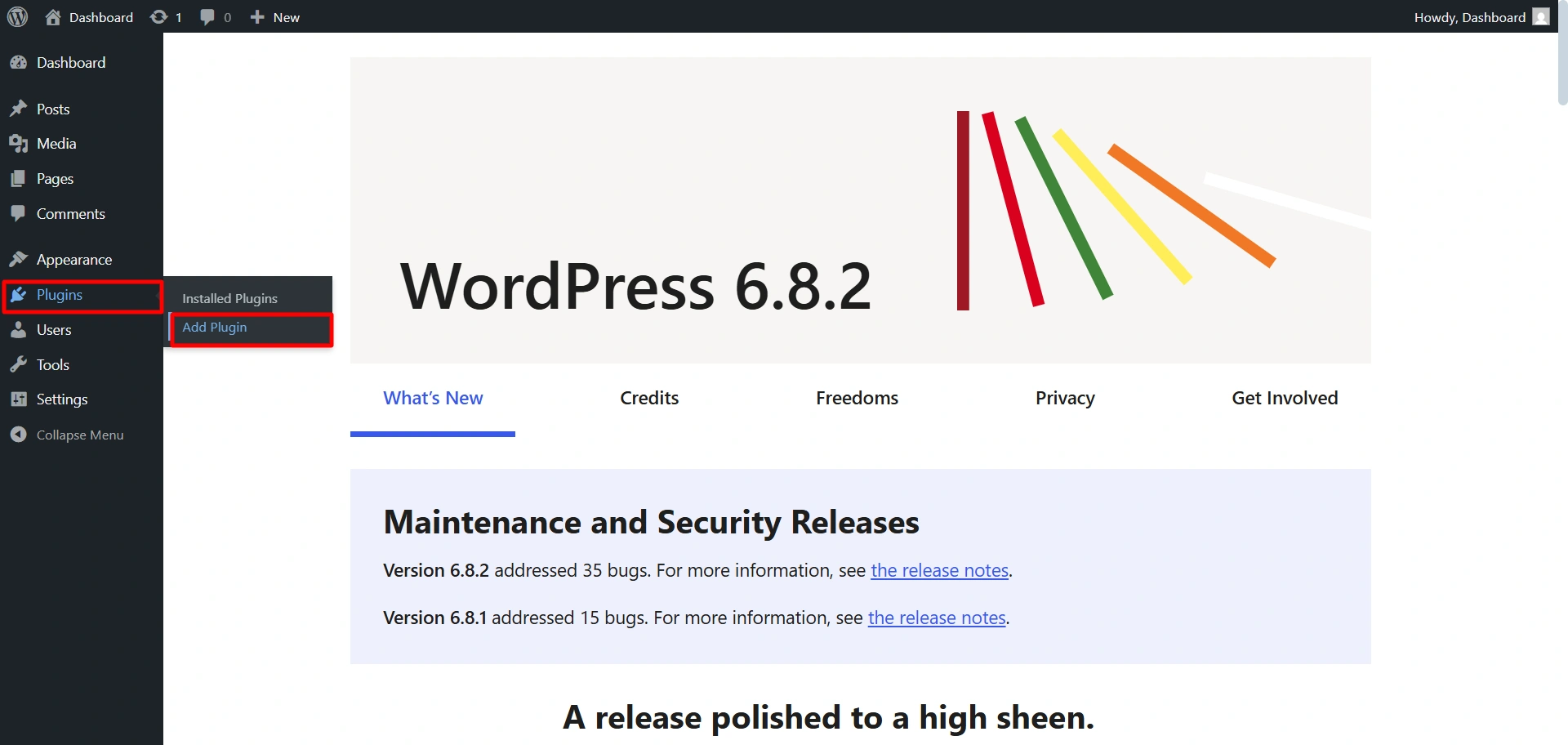
Search for Wplegalpages in the search bar above. Click on the Install Now button and after that activate it.
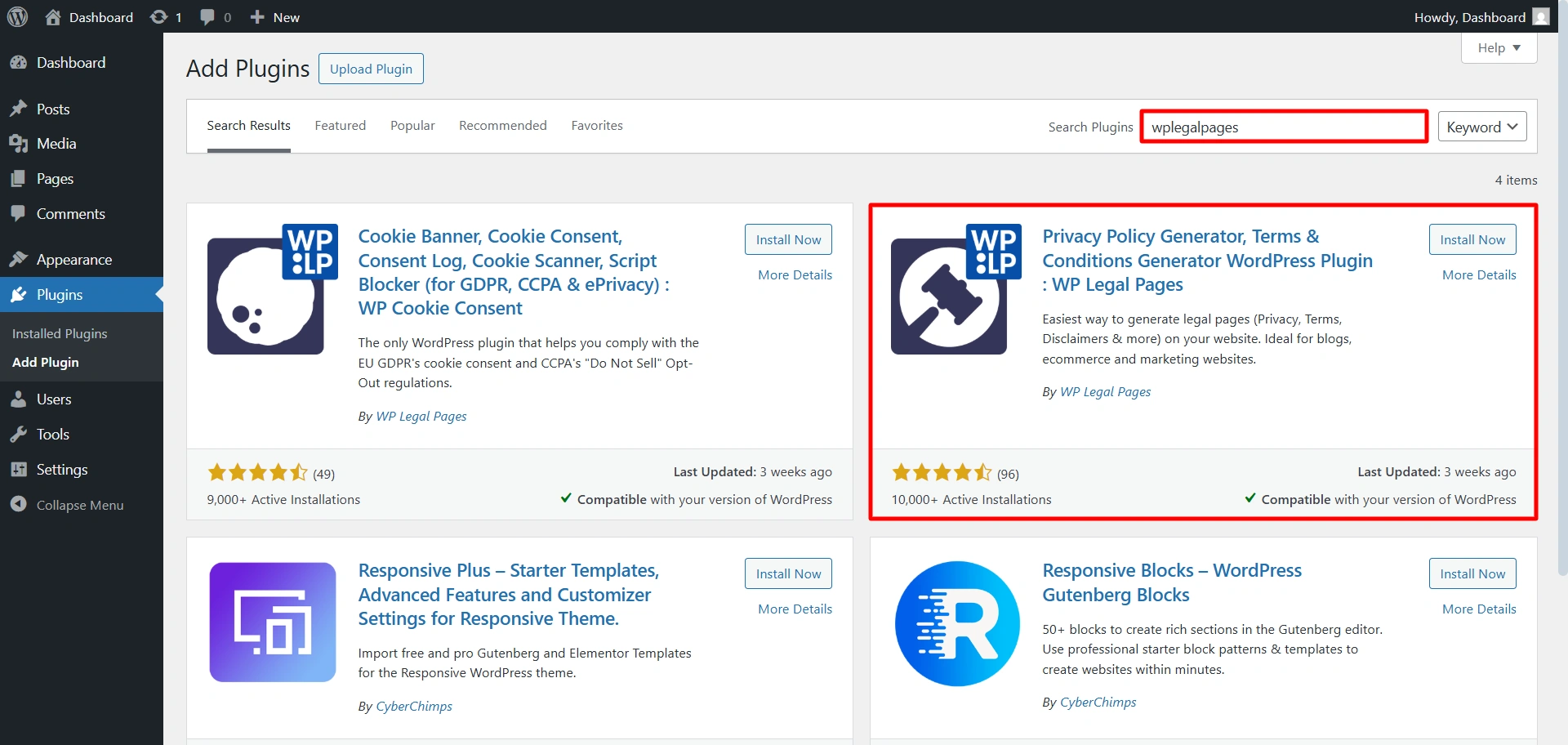
Next, accept the terms of use of the WPLegalPages plugin.
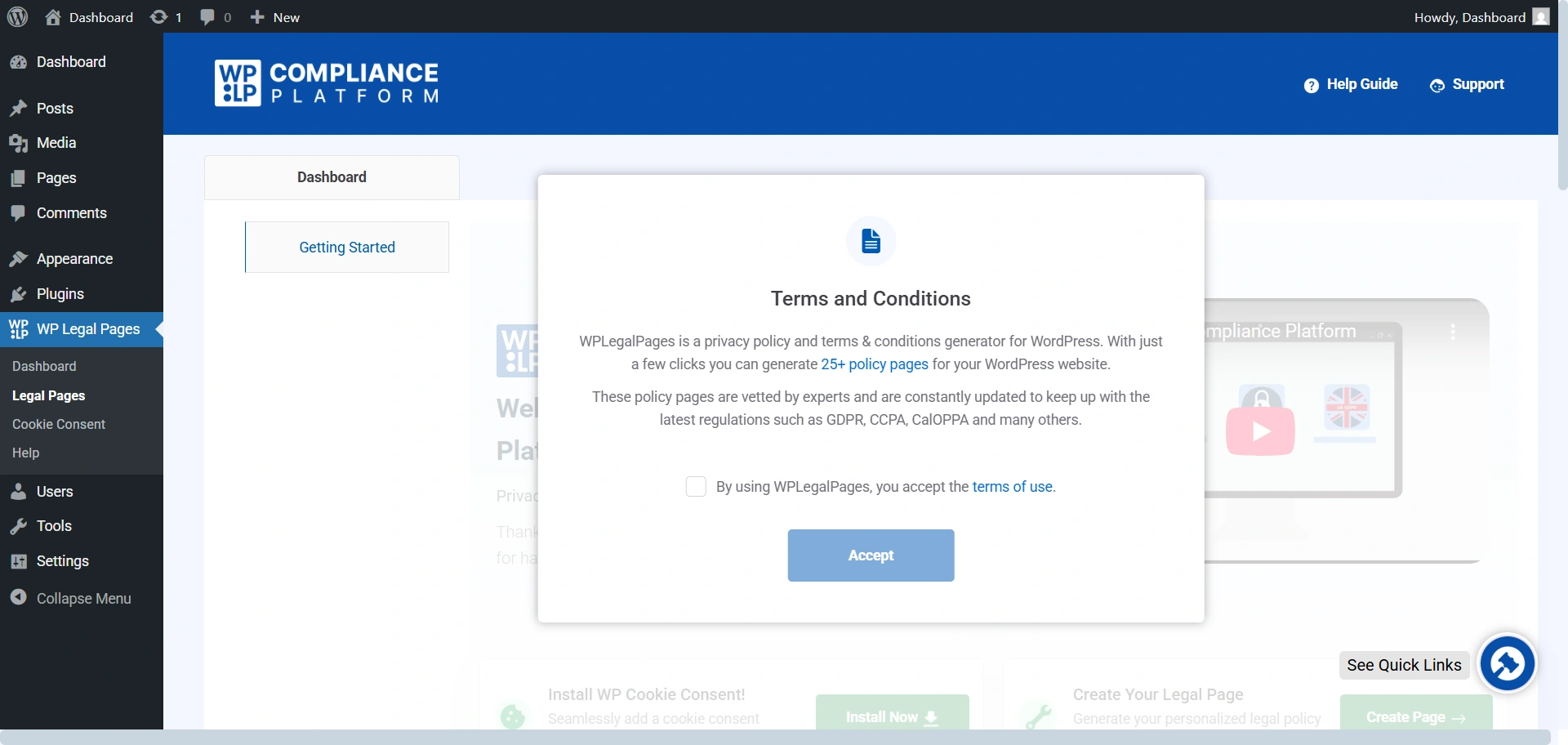
That’s it. You have successfully installed the WPLegalPages plugin.
Click on WP Legal Pages, and then click on Create Legal Pages, and generate your legal pages.
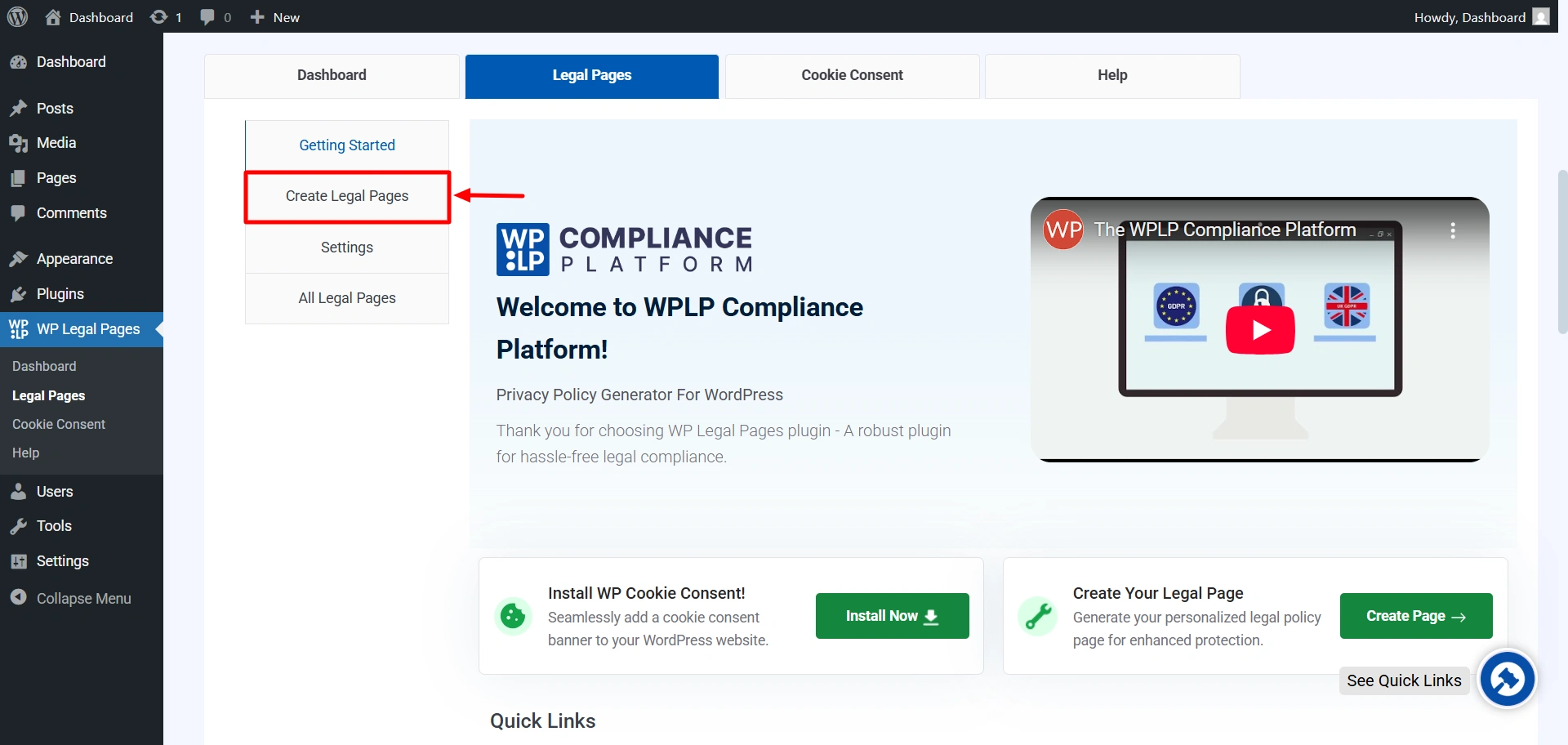
This will open the WPLegalPages wizard. From the WPLegalPages wizard, choose the Terms and Conditions template and click the Create button.
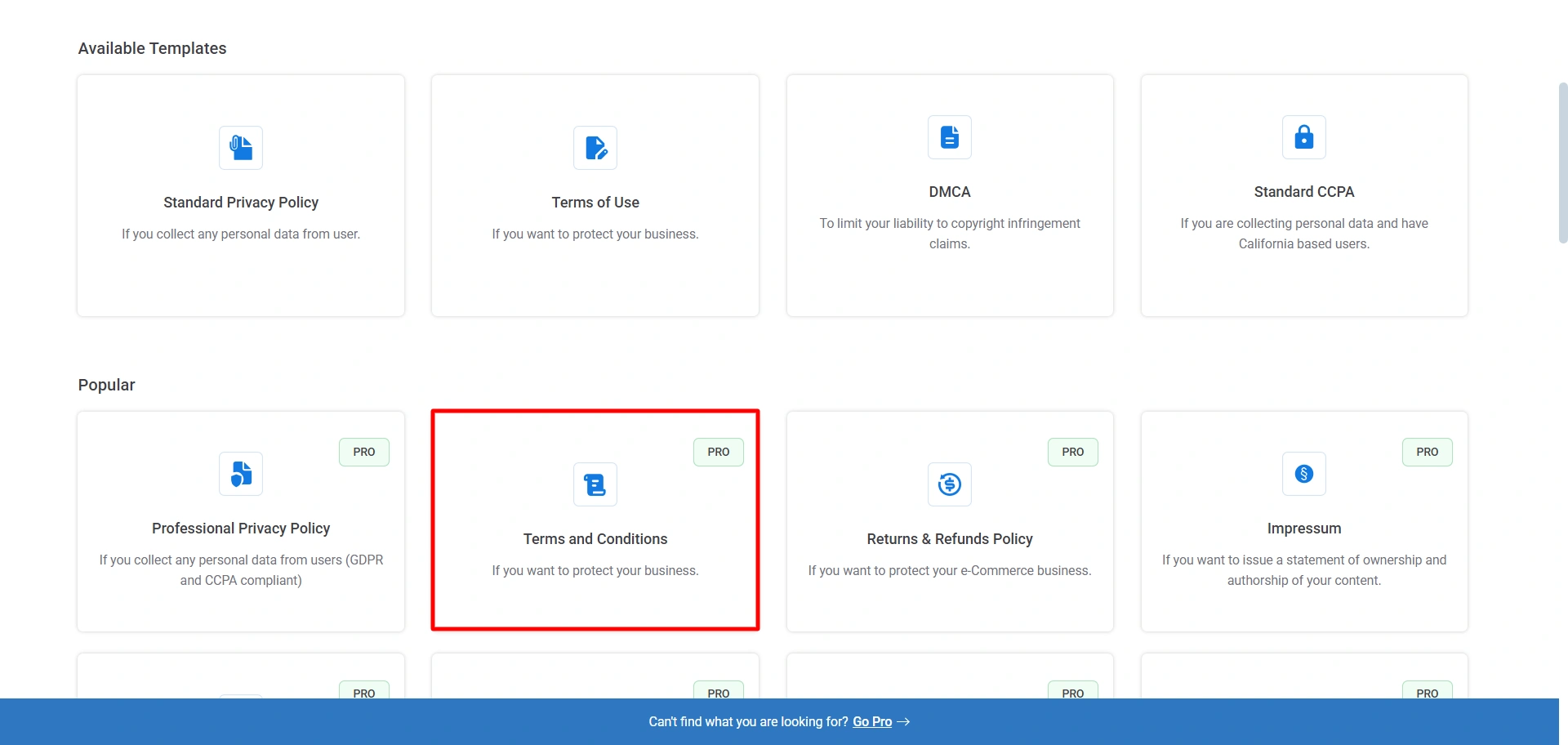
Create an account if you are a new user to activate the Pro plan, or continue with your existing account.
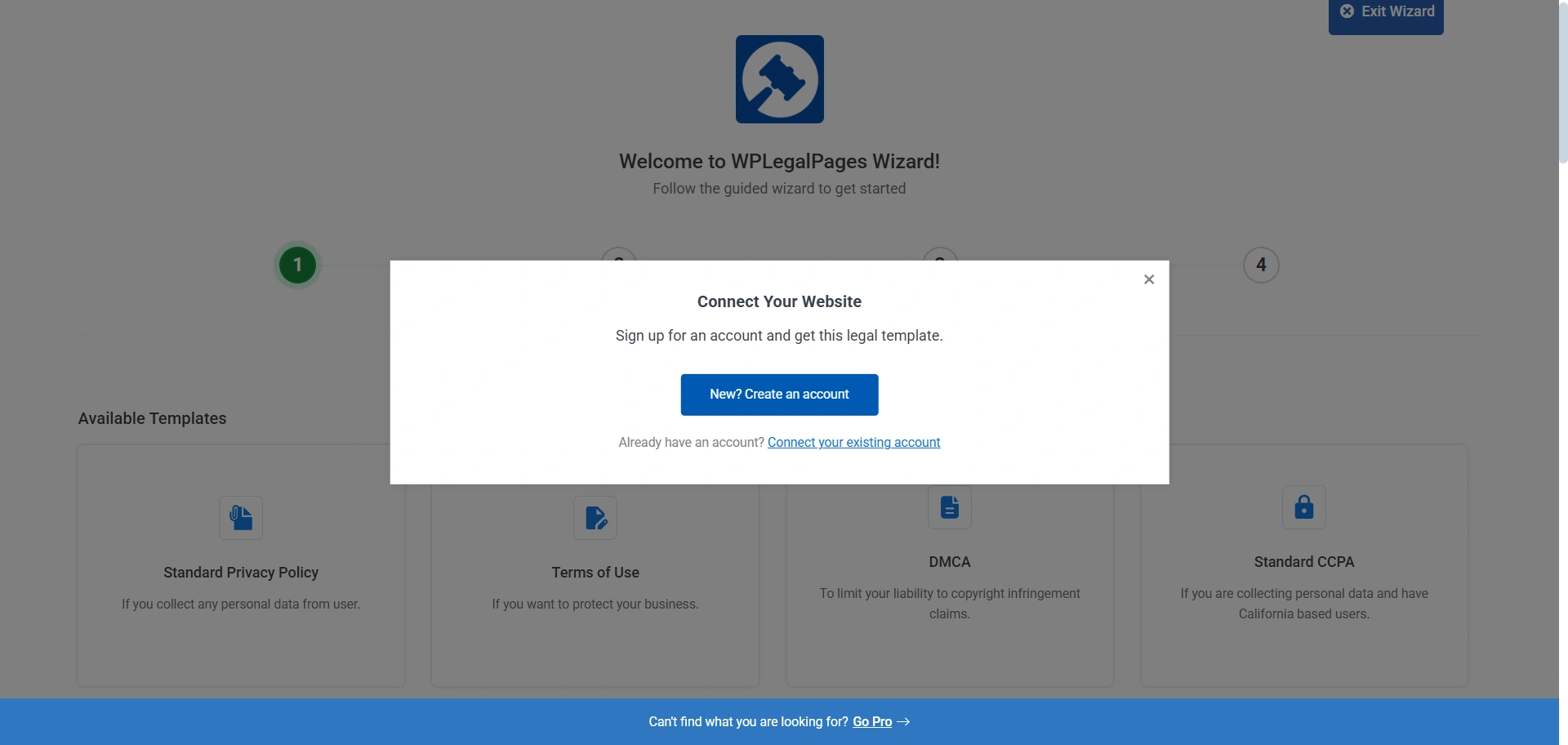
Next, fill in the Recommended details and click the NEXT button.
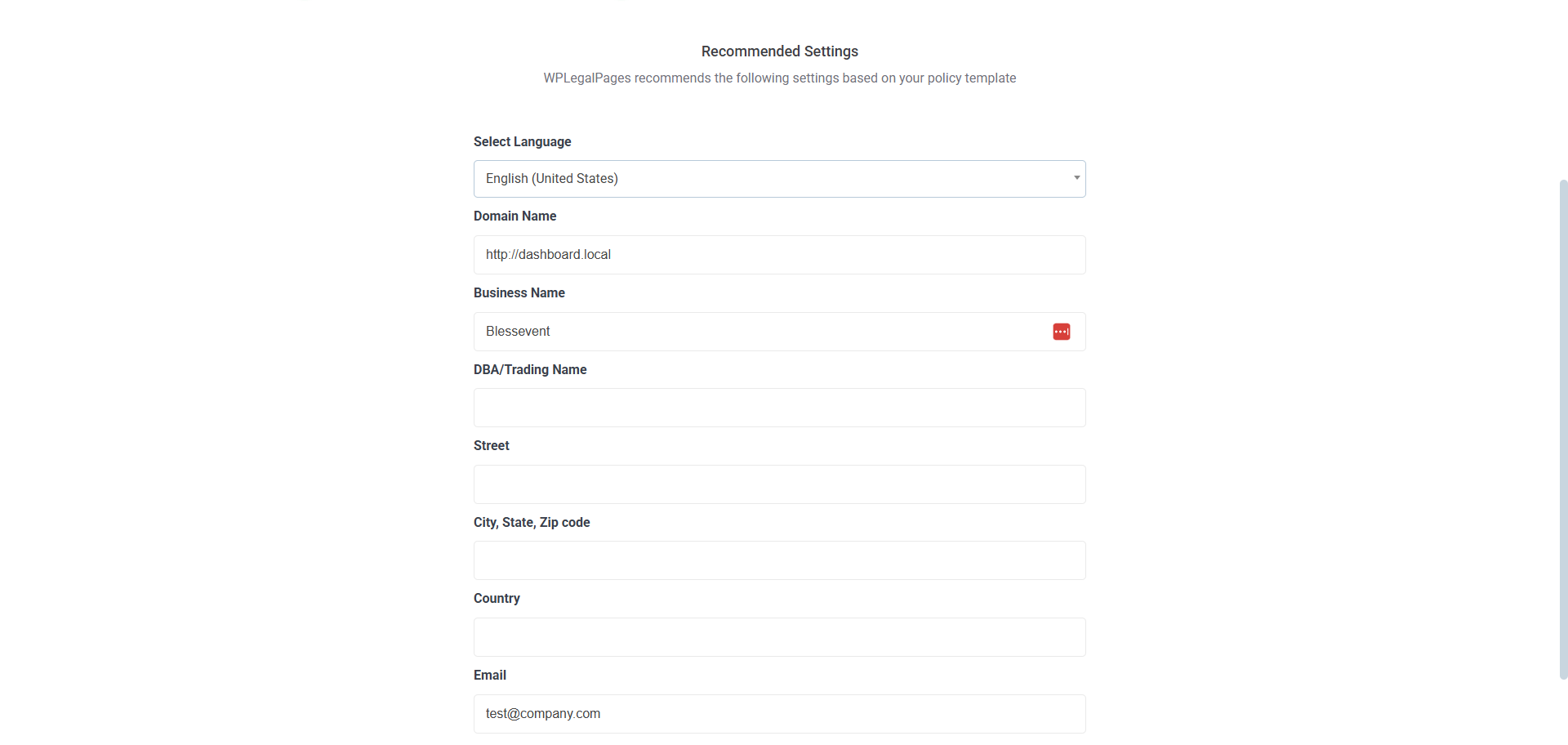
Now, choose the appropriate sections for your page and fill in the details. Scroll down to see all the options. Once done, click the Next button.
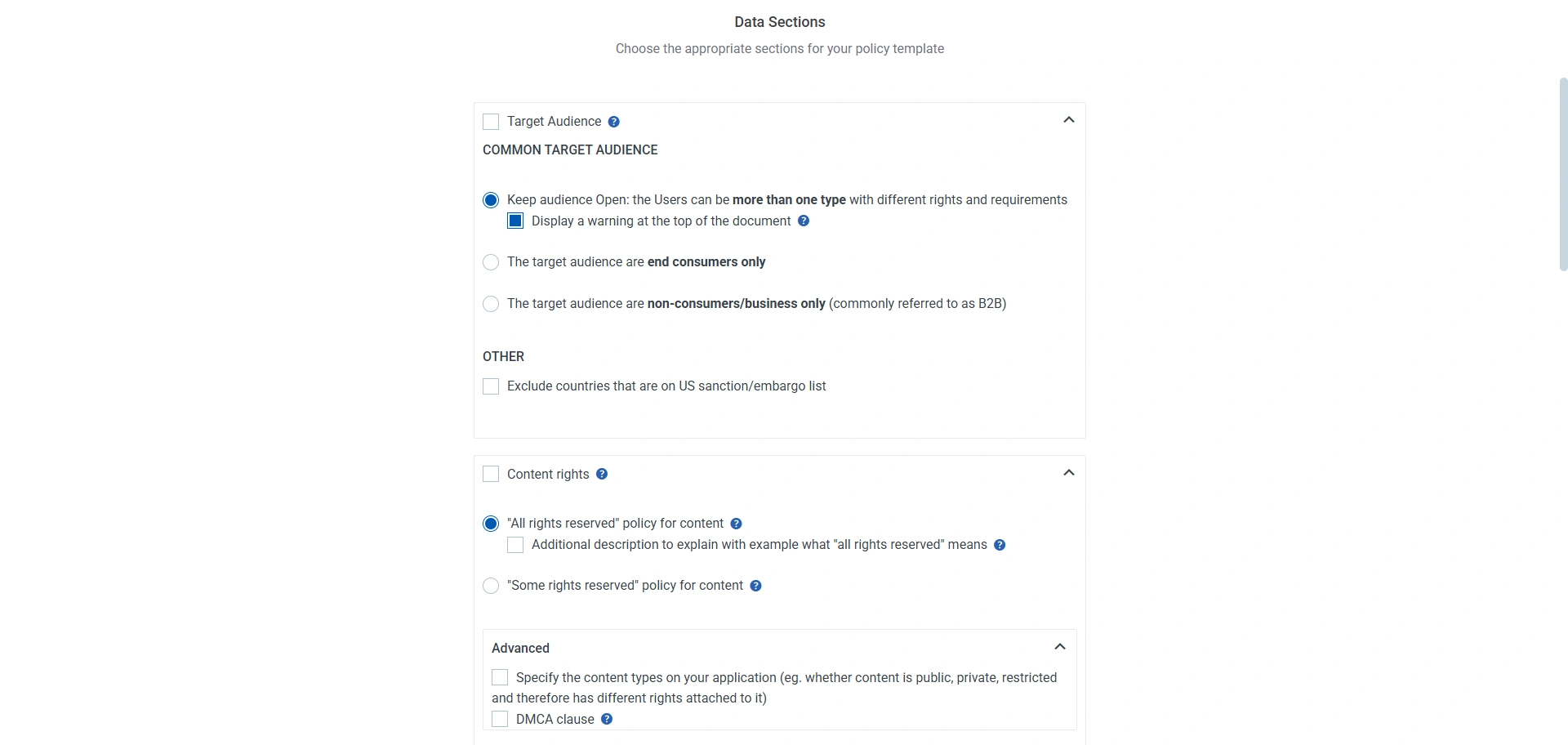
You can now check the preview of the terms and conditions page. Once reviewed, click on the Create and Edit button.
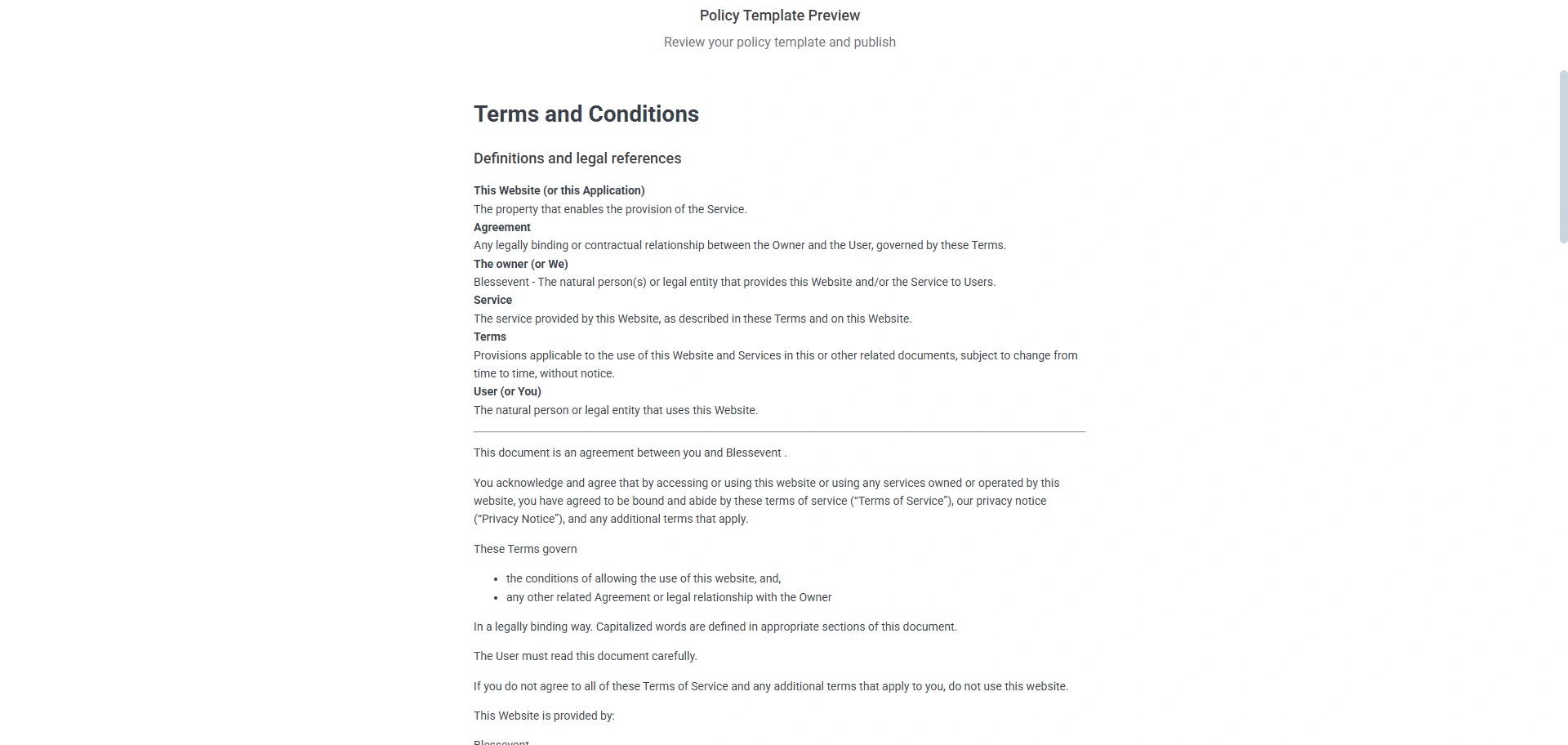
This will open the WordPress editor. Review all the details in the editor again and click the Publish button.
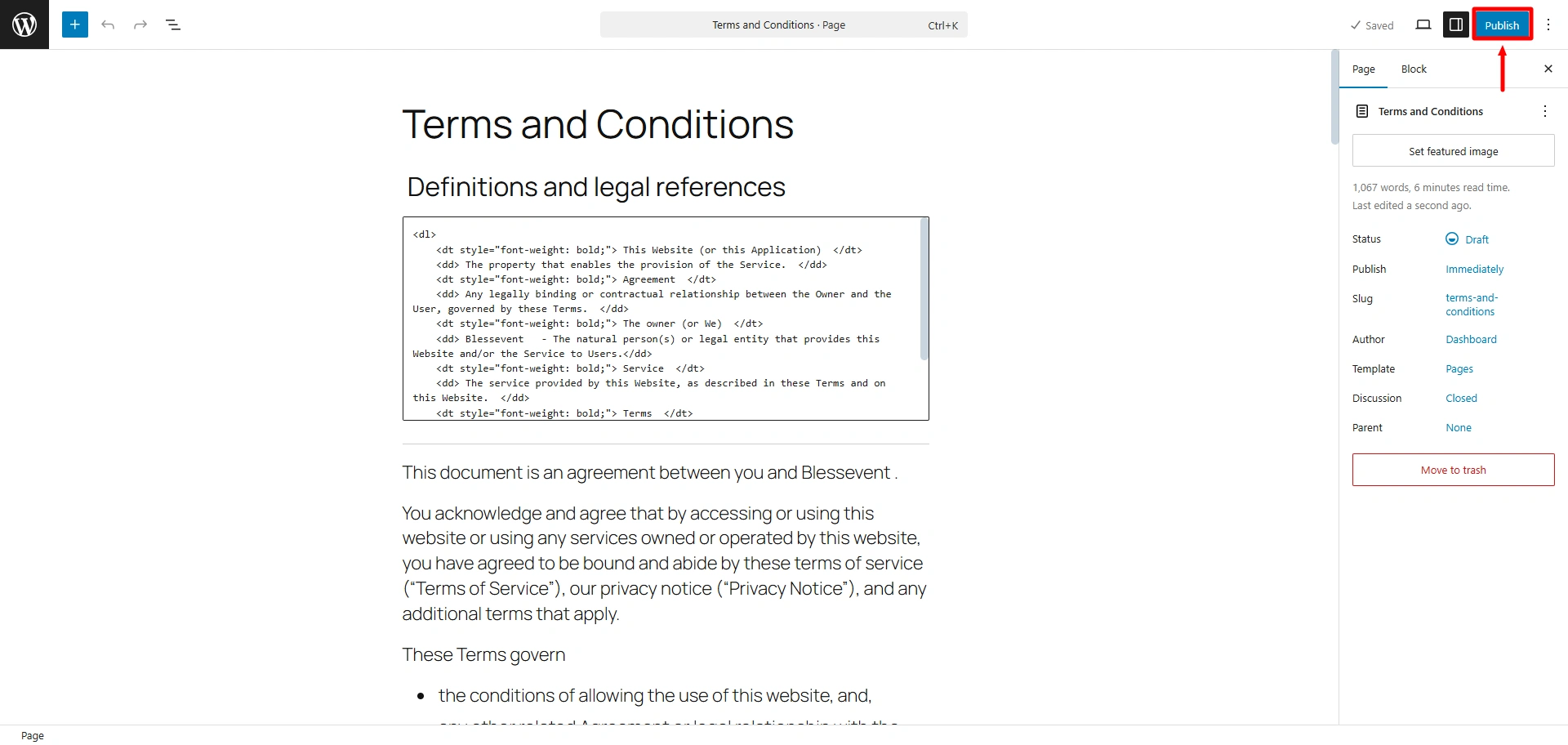
That’s it! You have now successfully created a terms of use page for your website.
Conclusion
In this post, we have provided terms and conditions examples to assist you in making decisions and gathering ideas as you create your terms and conditions for your work.
Any business must have a terms and conditions page on its website. These pages build user trust while legally safeguarding your company. The terms and conditions page contains a contract between you and your users. It includes all of the users’ guidelines to prevent breaking corporate policies.
We suggest using the WPLP Compliance Platform to establish any legal pages. Key legal pages for your website can be created with the plugin’s assistance. Among its more than 30 templates, terms and conditions is one that you can use to create a terms and conditions page quickly.
Disclaimer: This article is for informational purposes only and does not constitute legal advice. Laws and regulations may vary by jurisdiction and are subject to change. Readers should consult with a qualified legal professional before drafting or updating their Terms and Conditions to ensure compliance with applicable laws.
If you’ve liked reading this article, check out our other engaging articles:
- Understanding Privacy Statements and Simplifying Compliance
- Best Terms And Conditions Generators – A Detailed Review
- Digital Markets Act: What Website Owners Need to Know
Want to create more legal pages for your website? Grab the WPLP Compliance Platform now!
